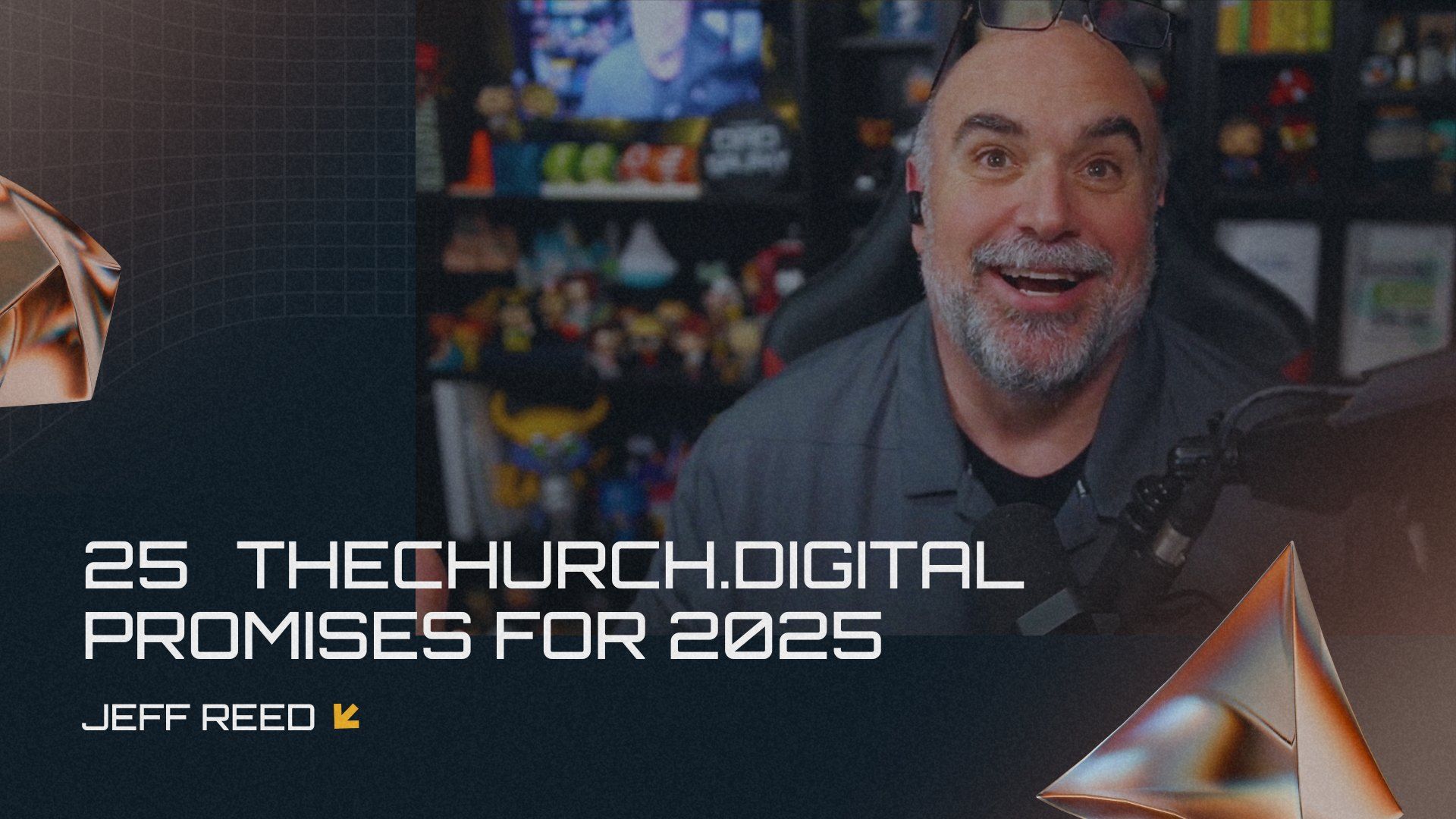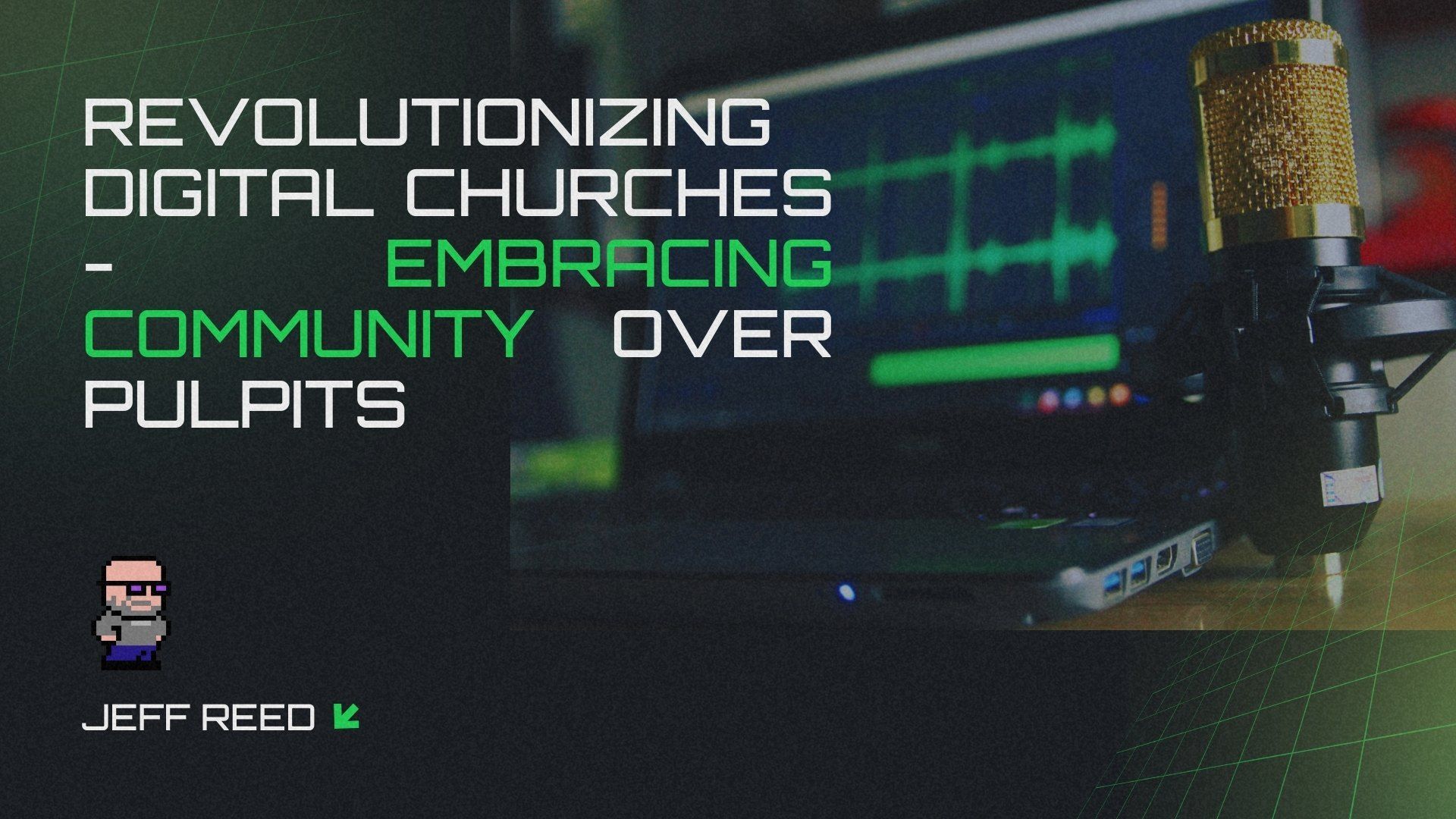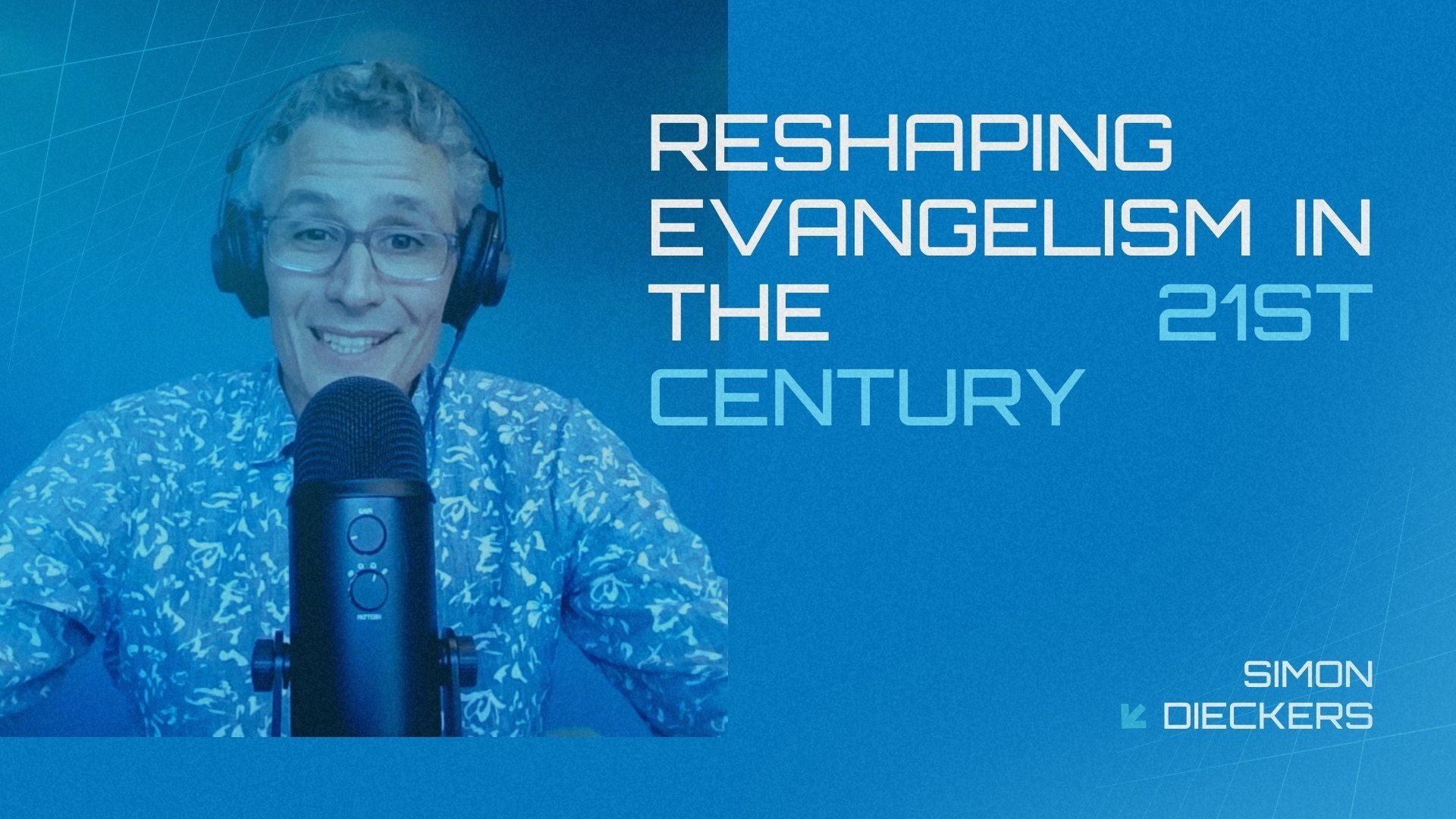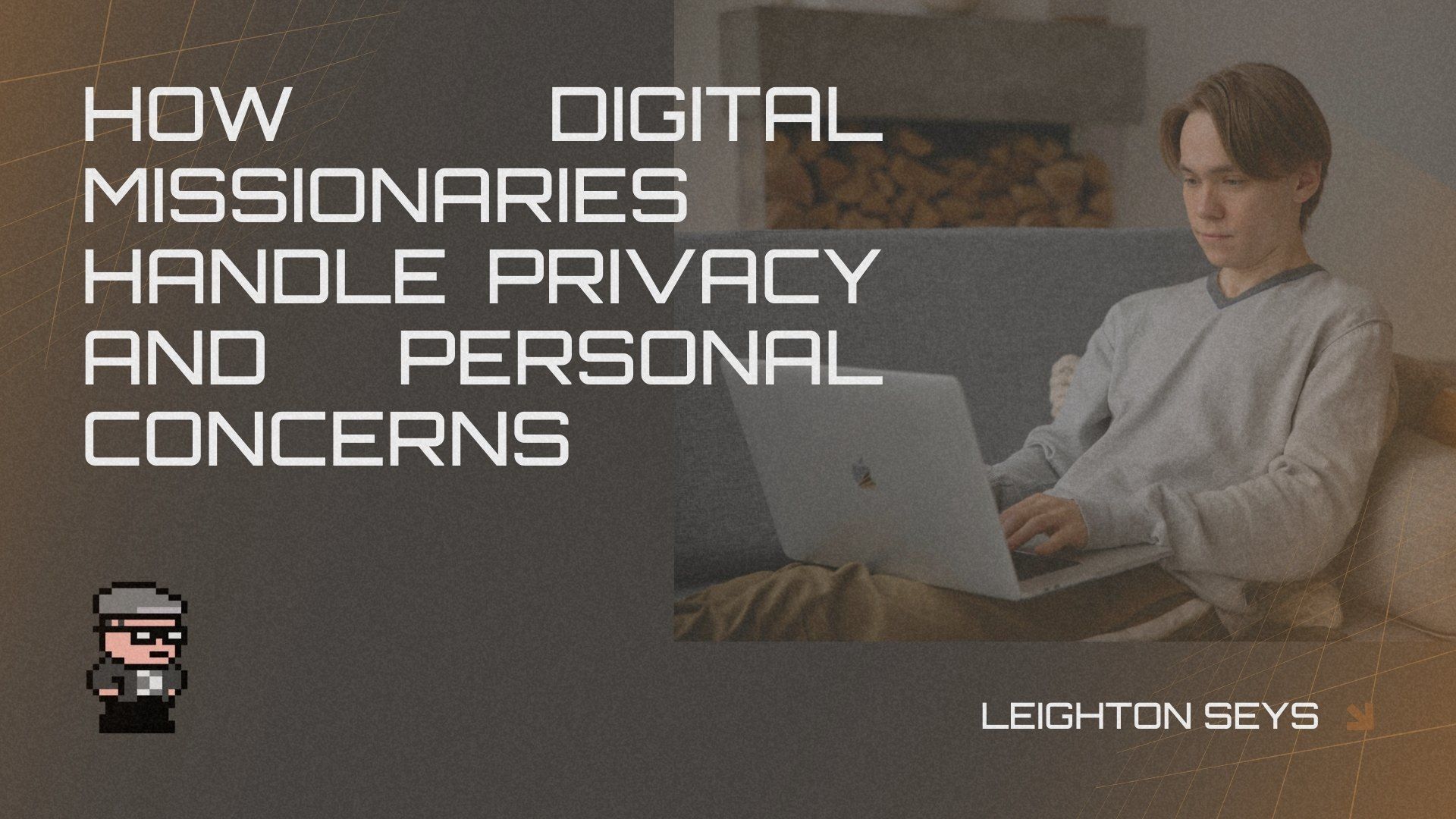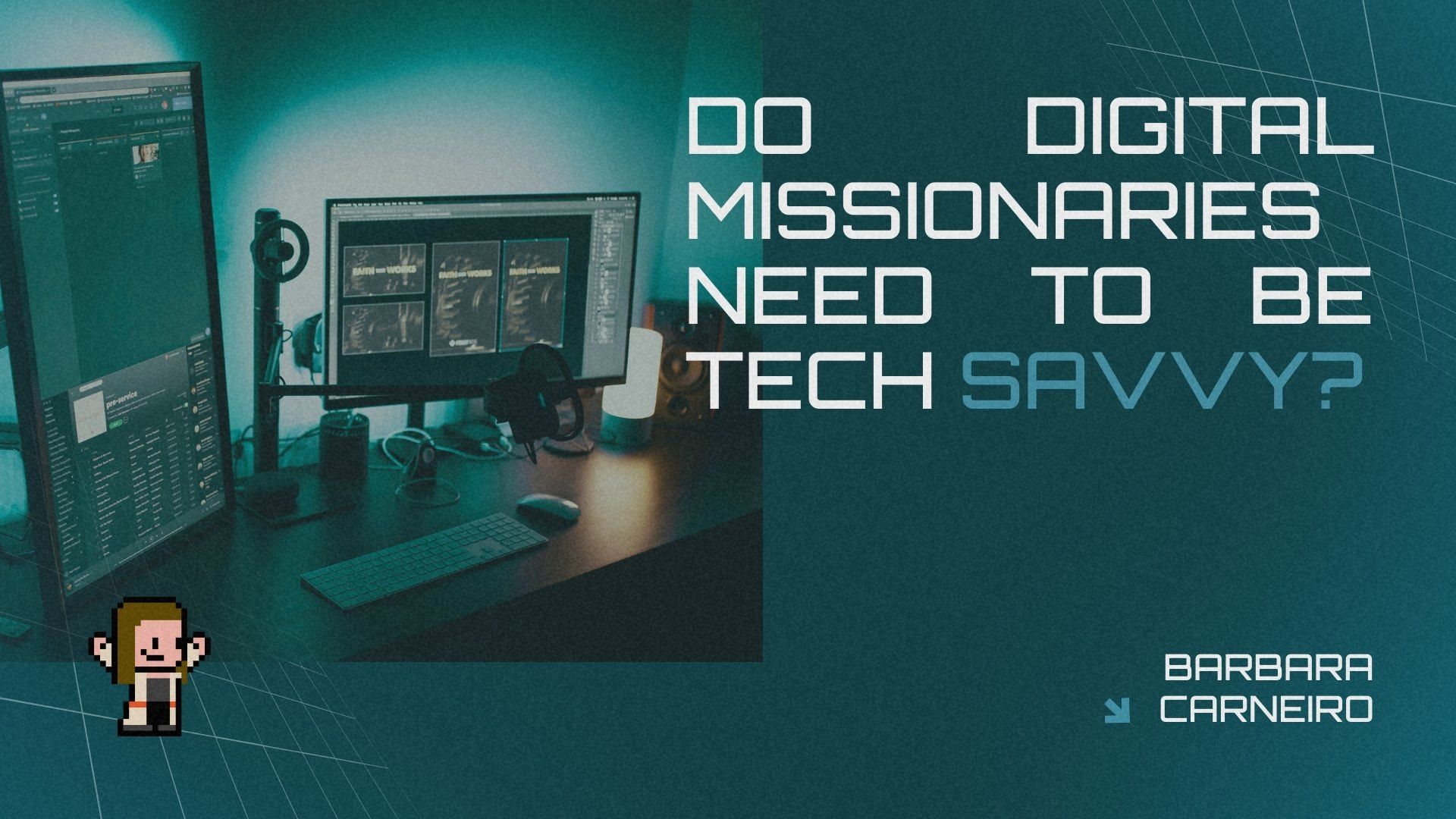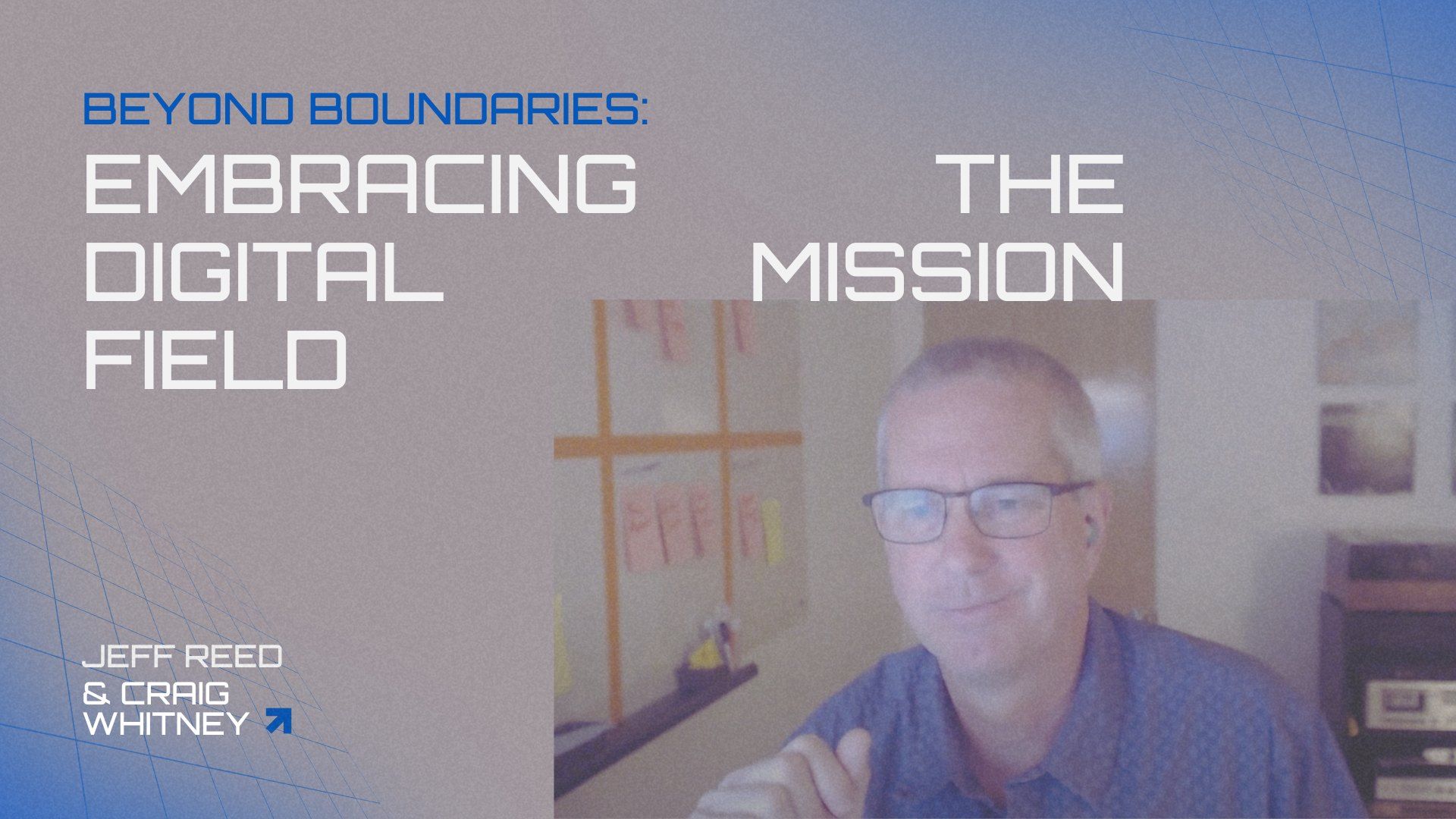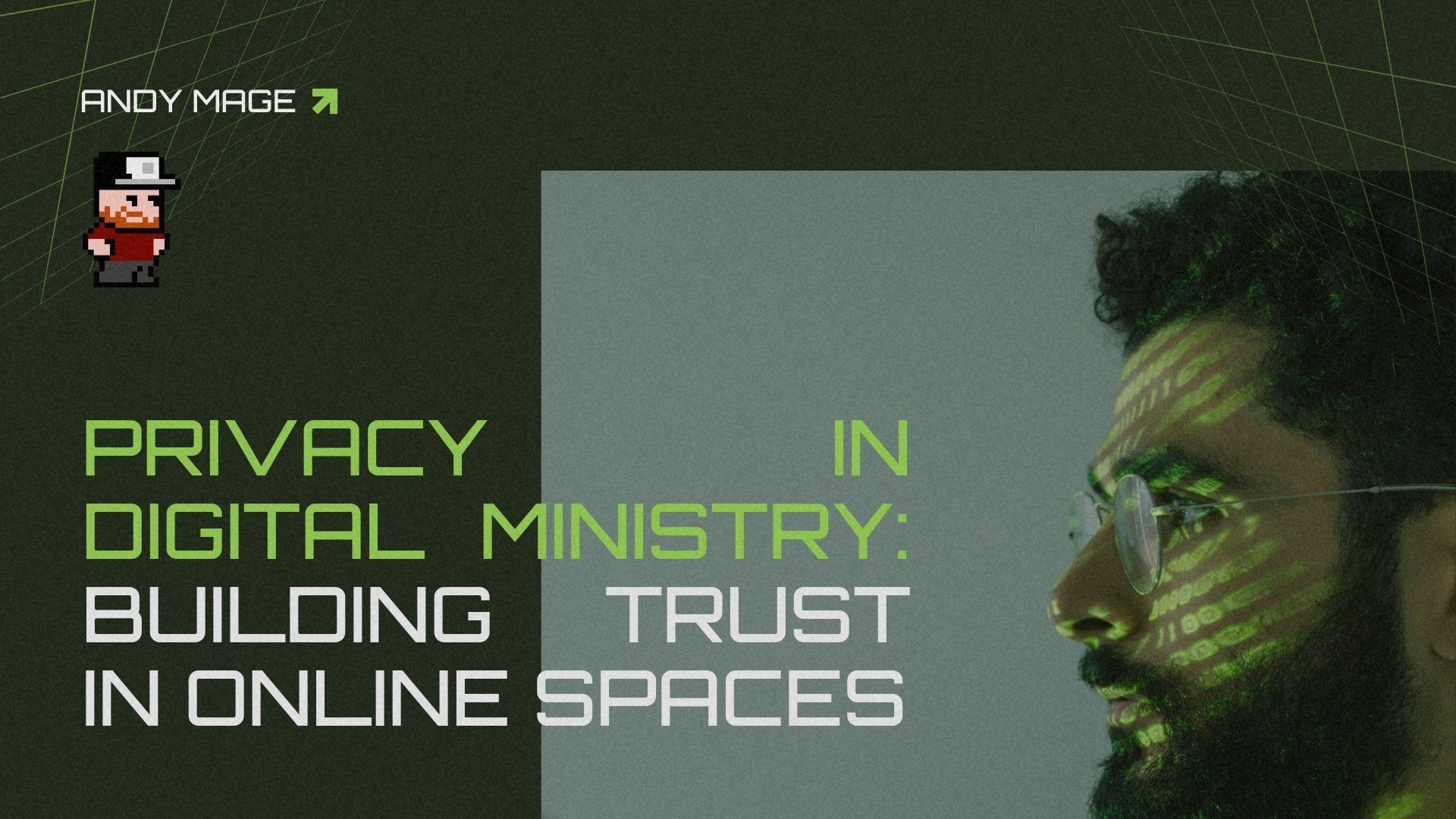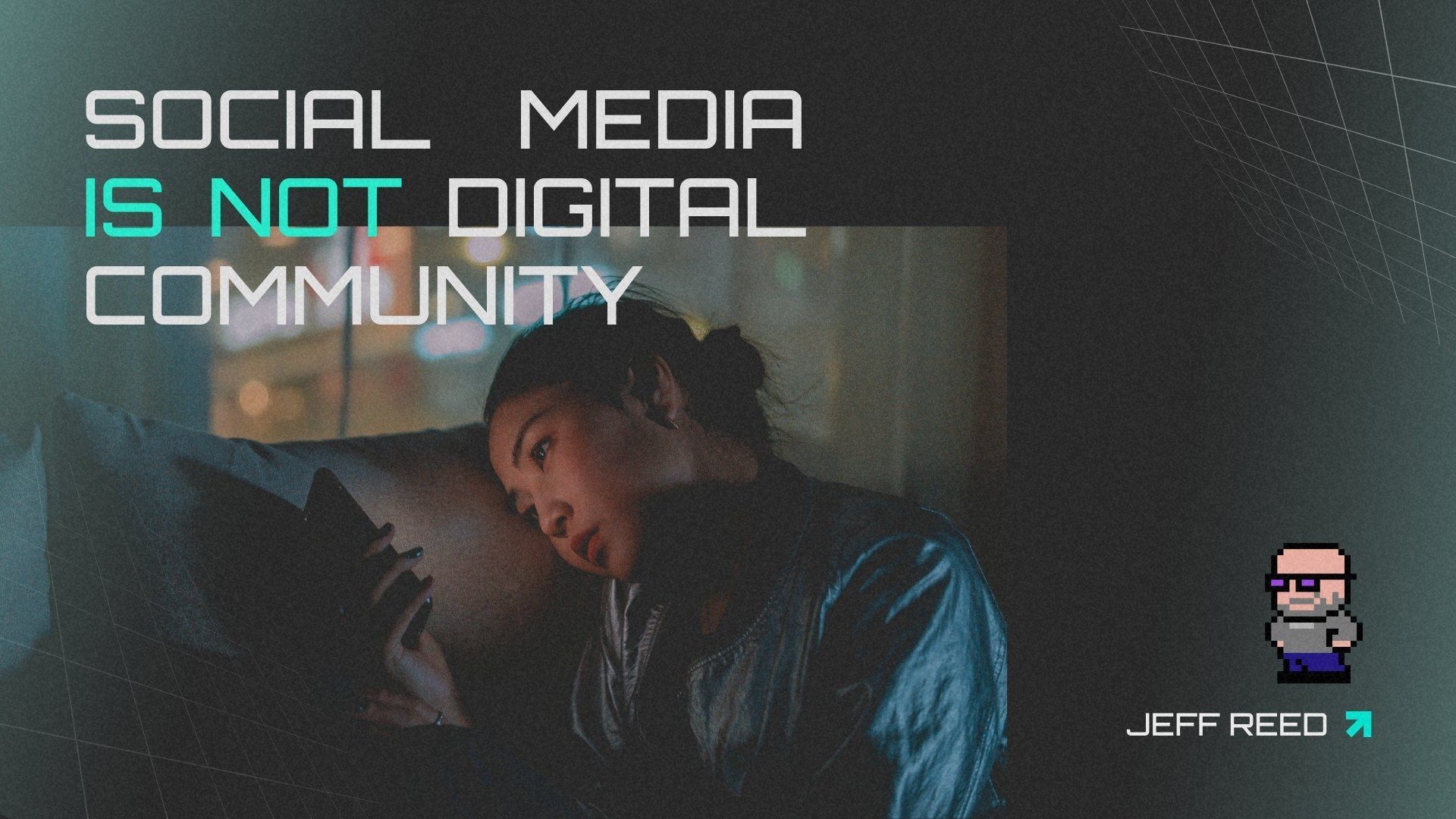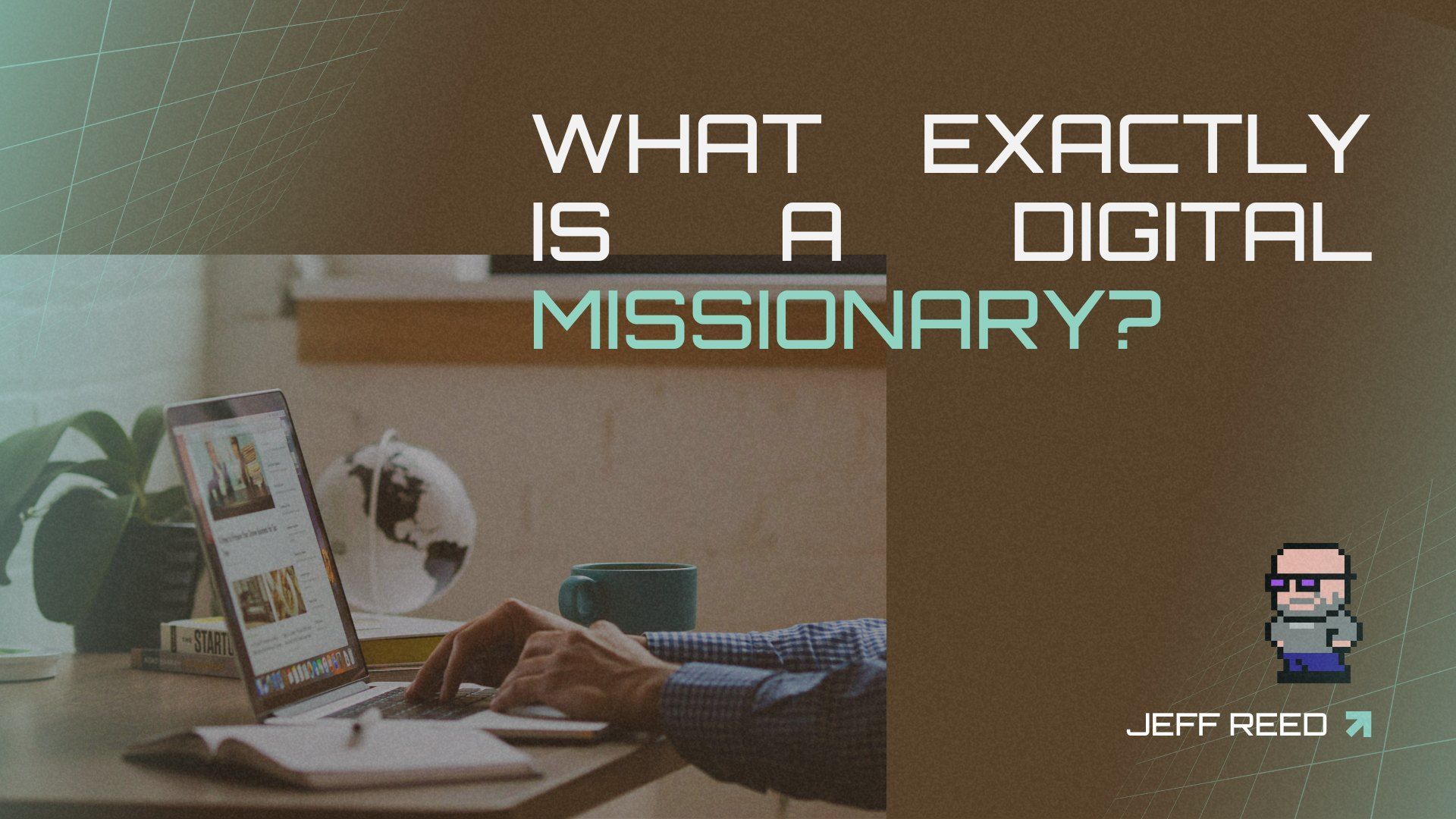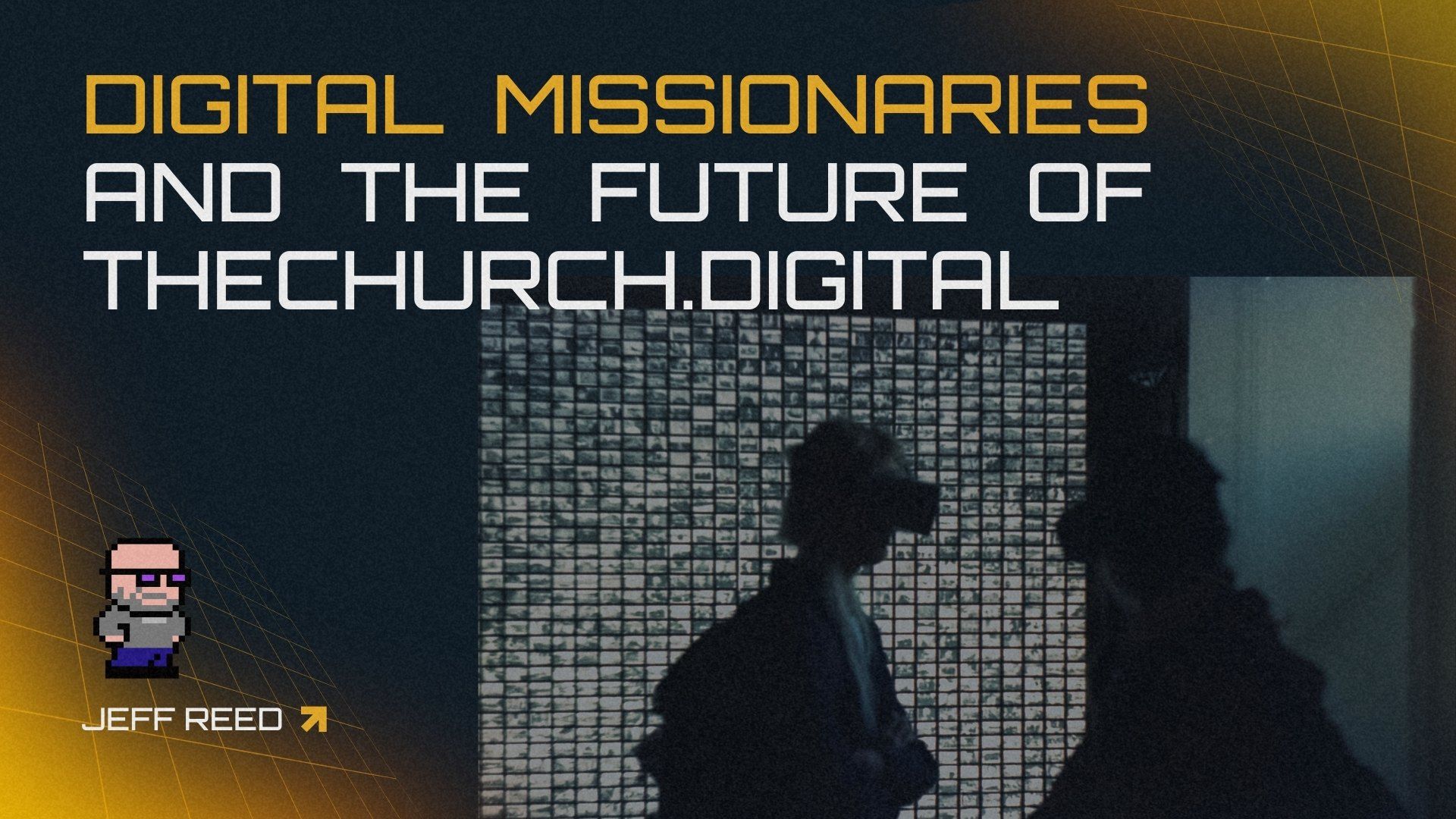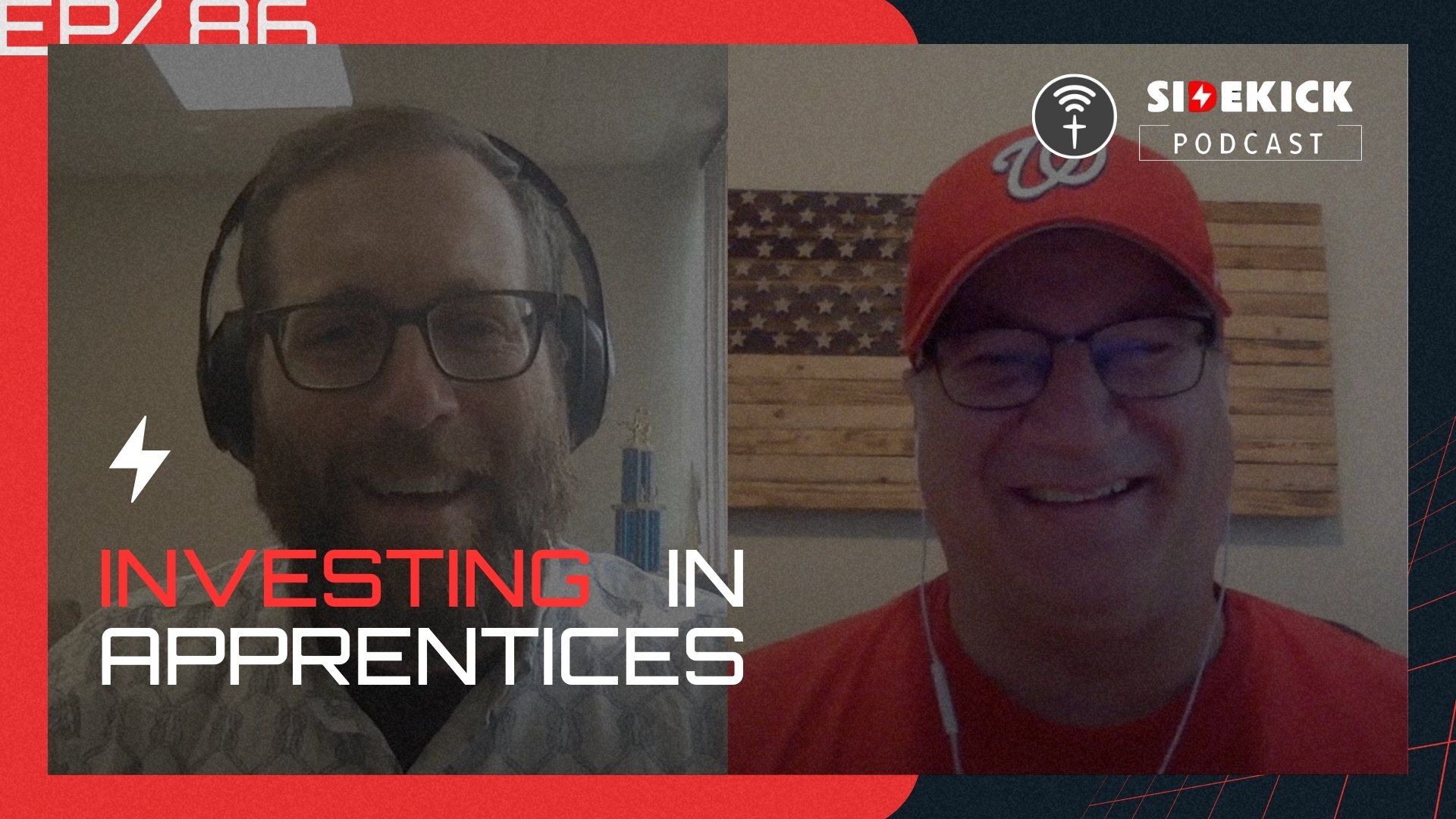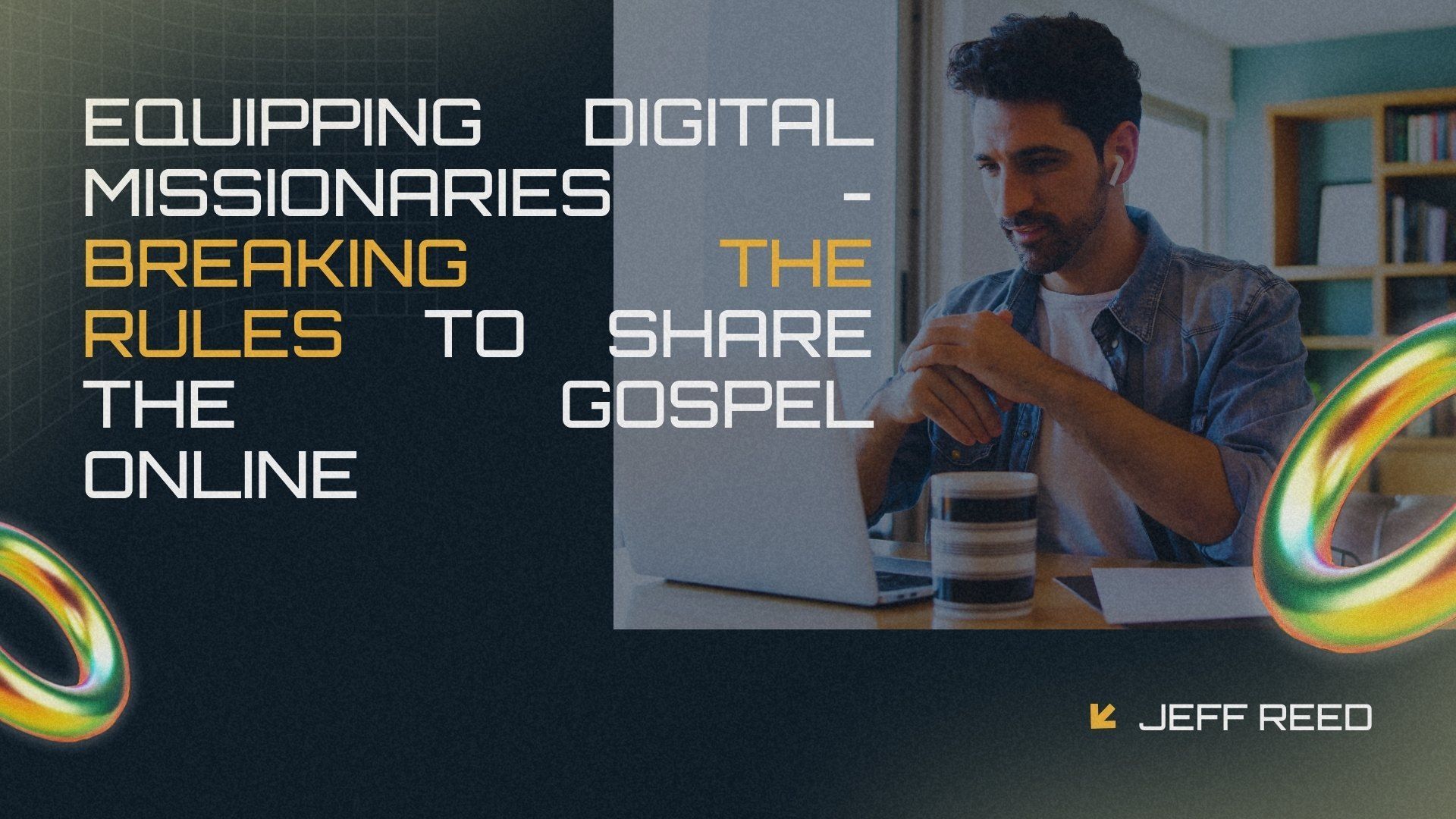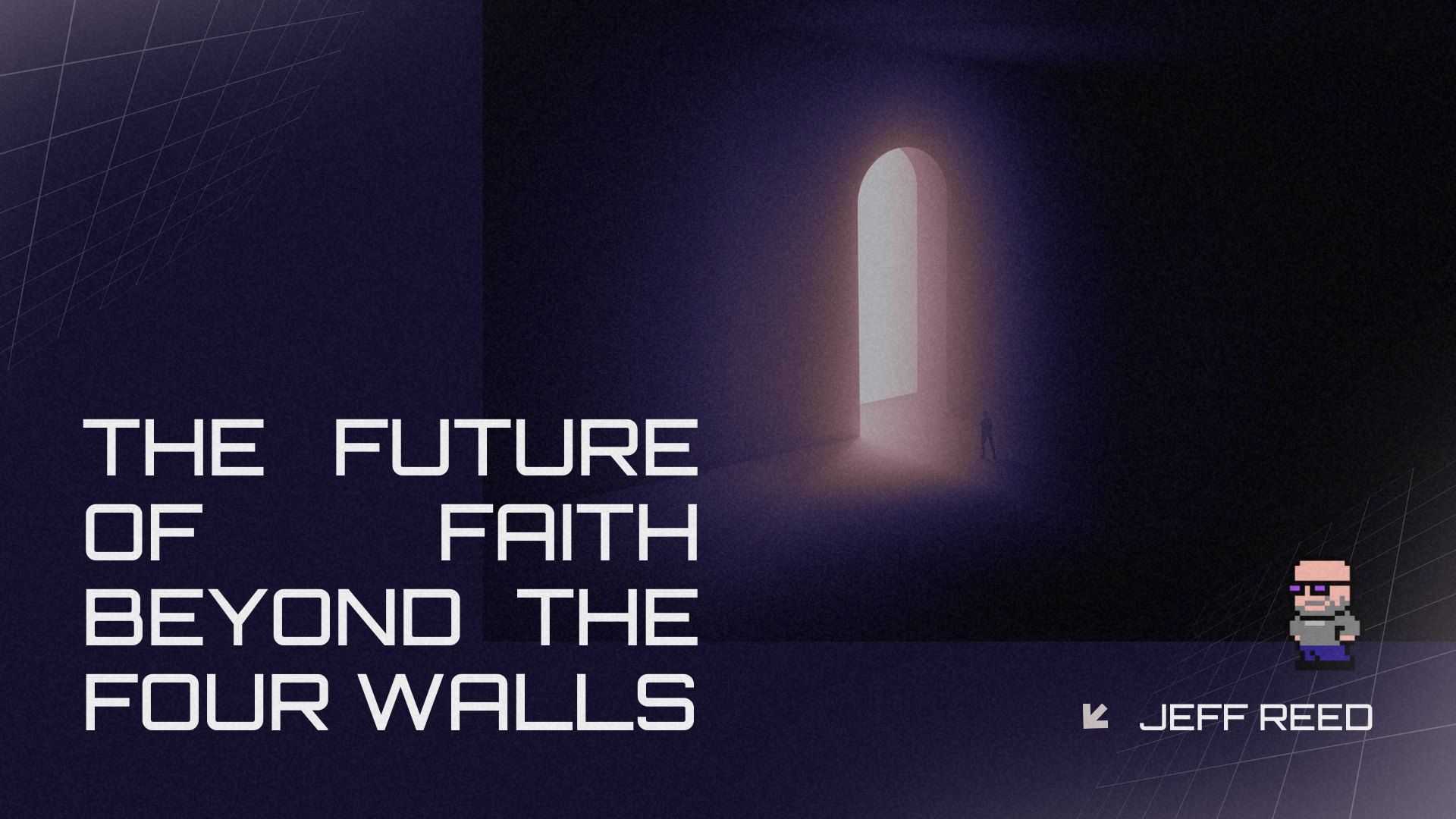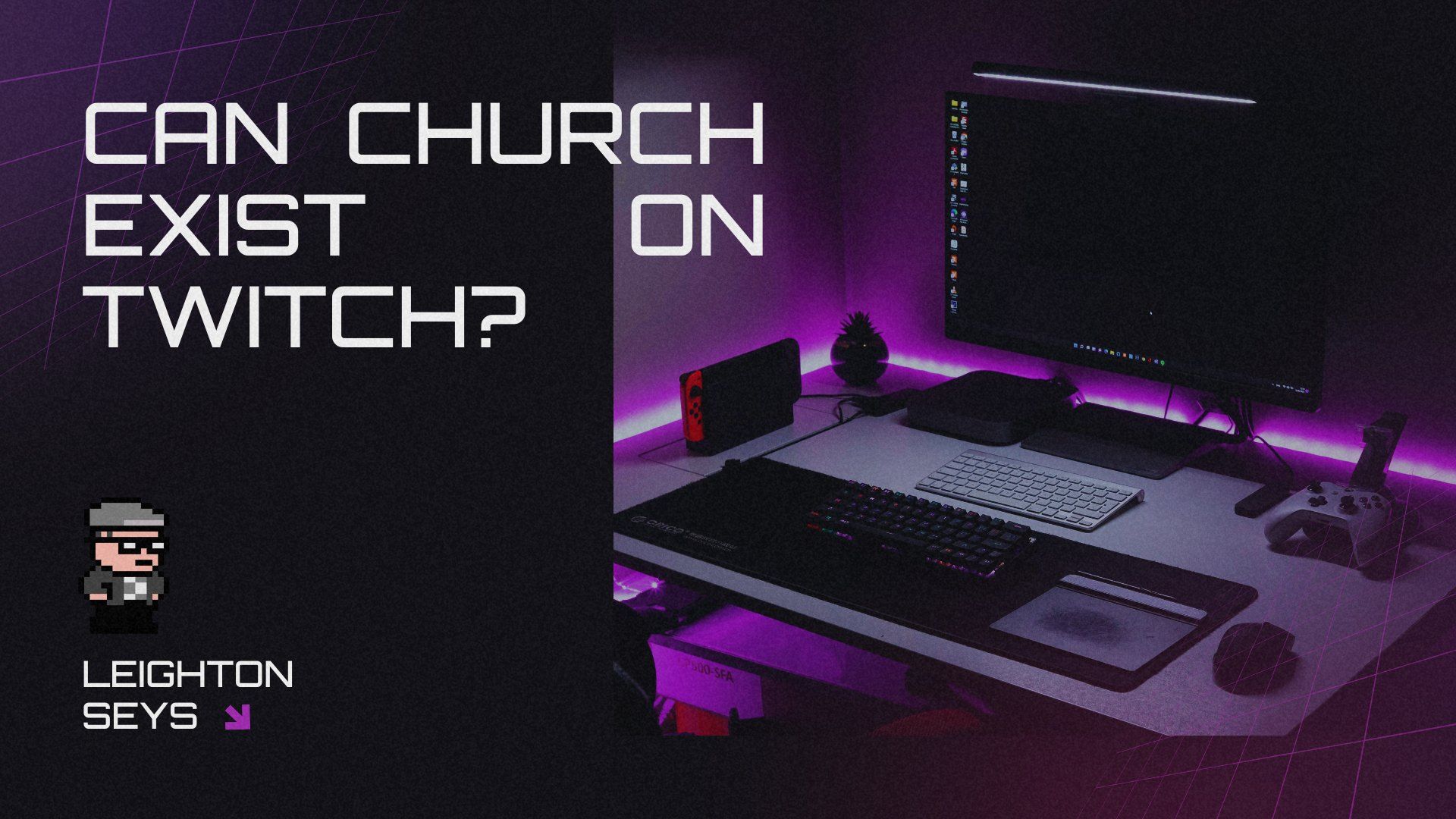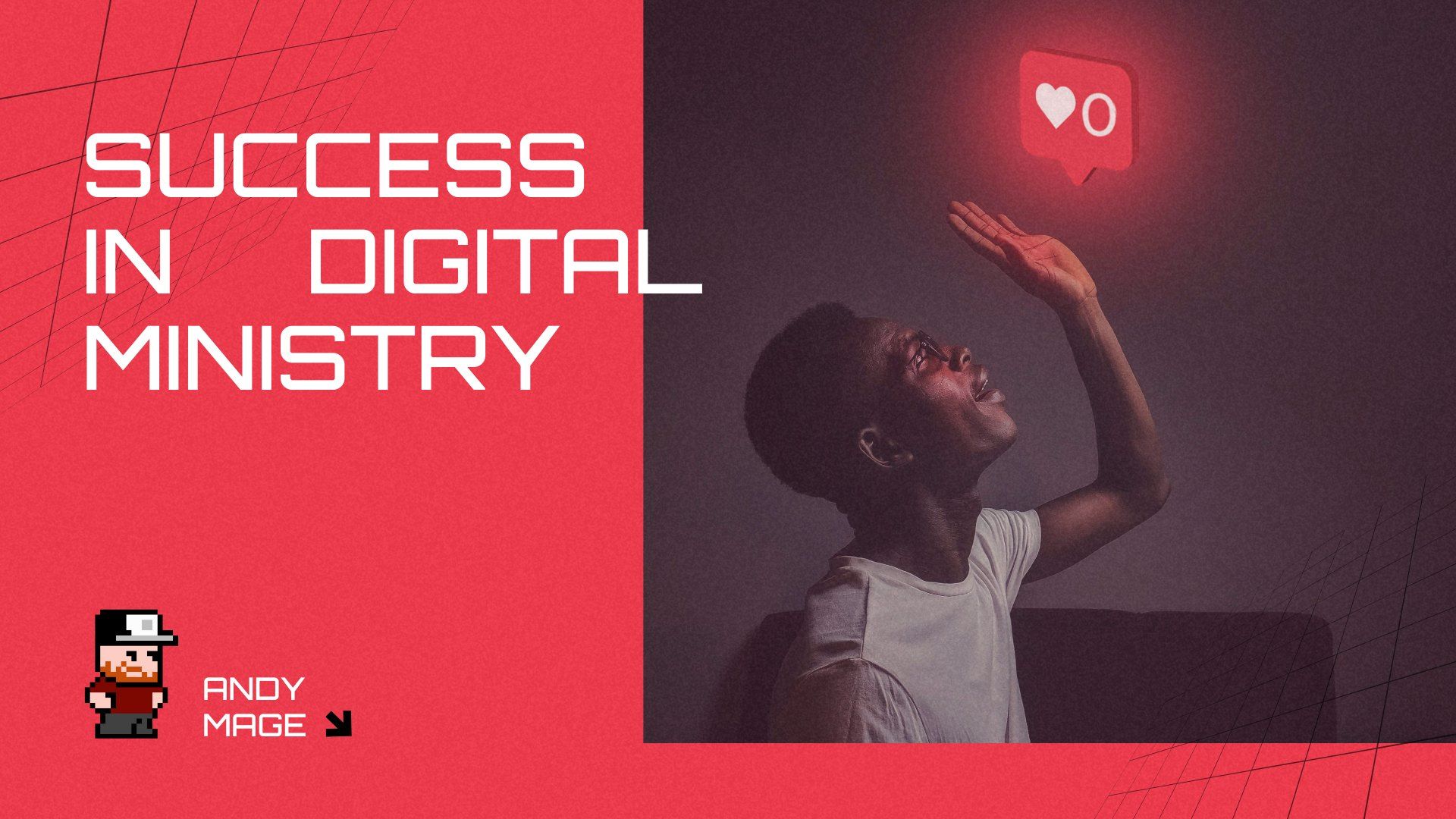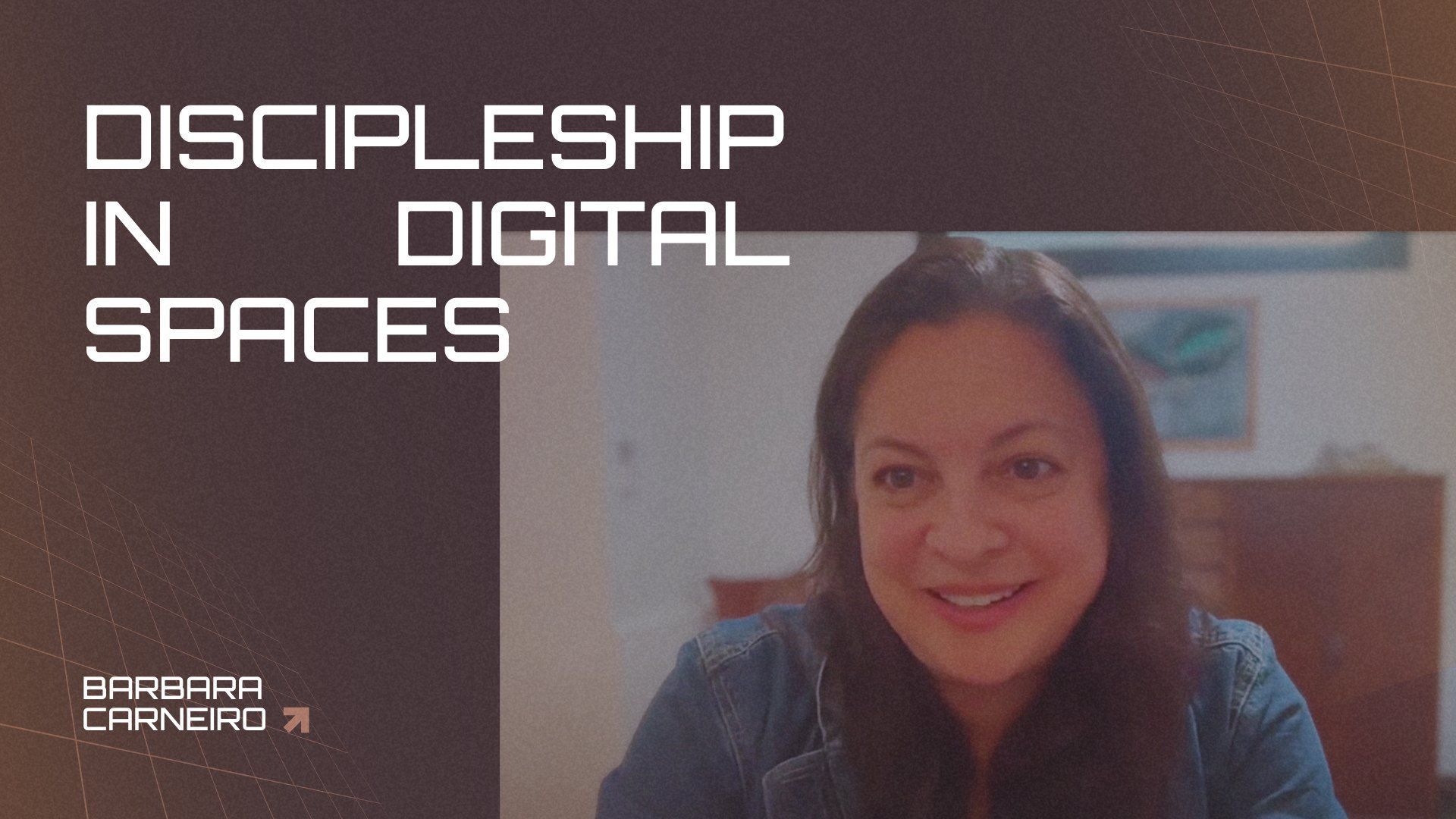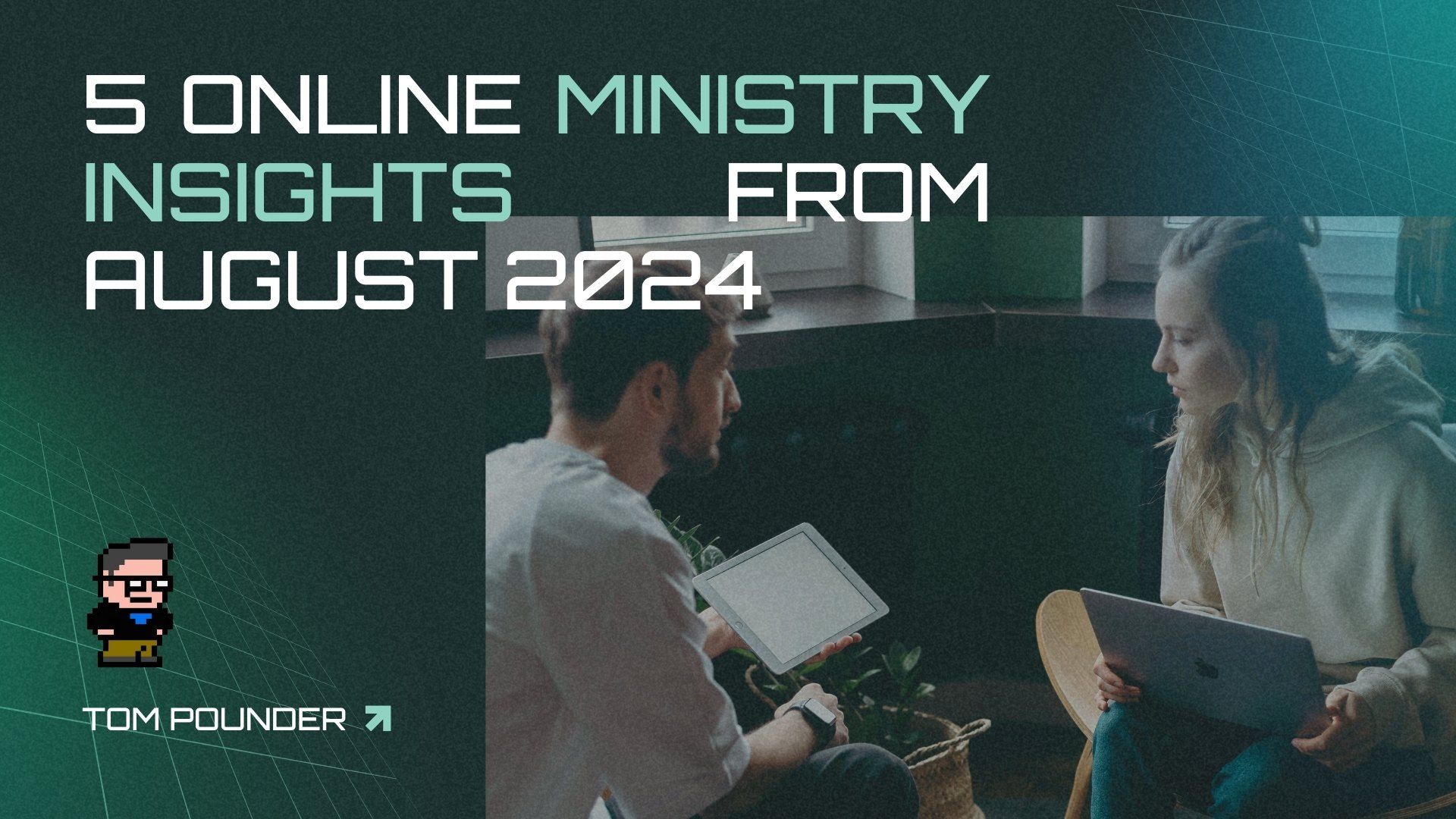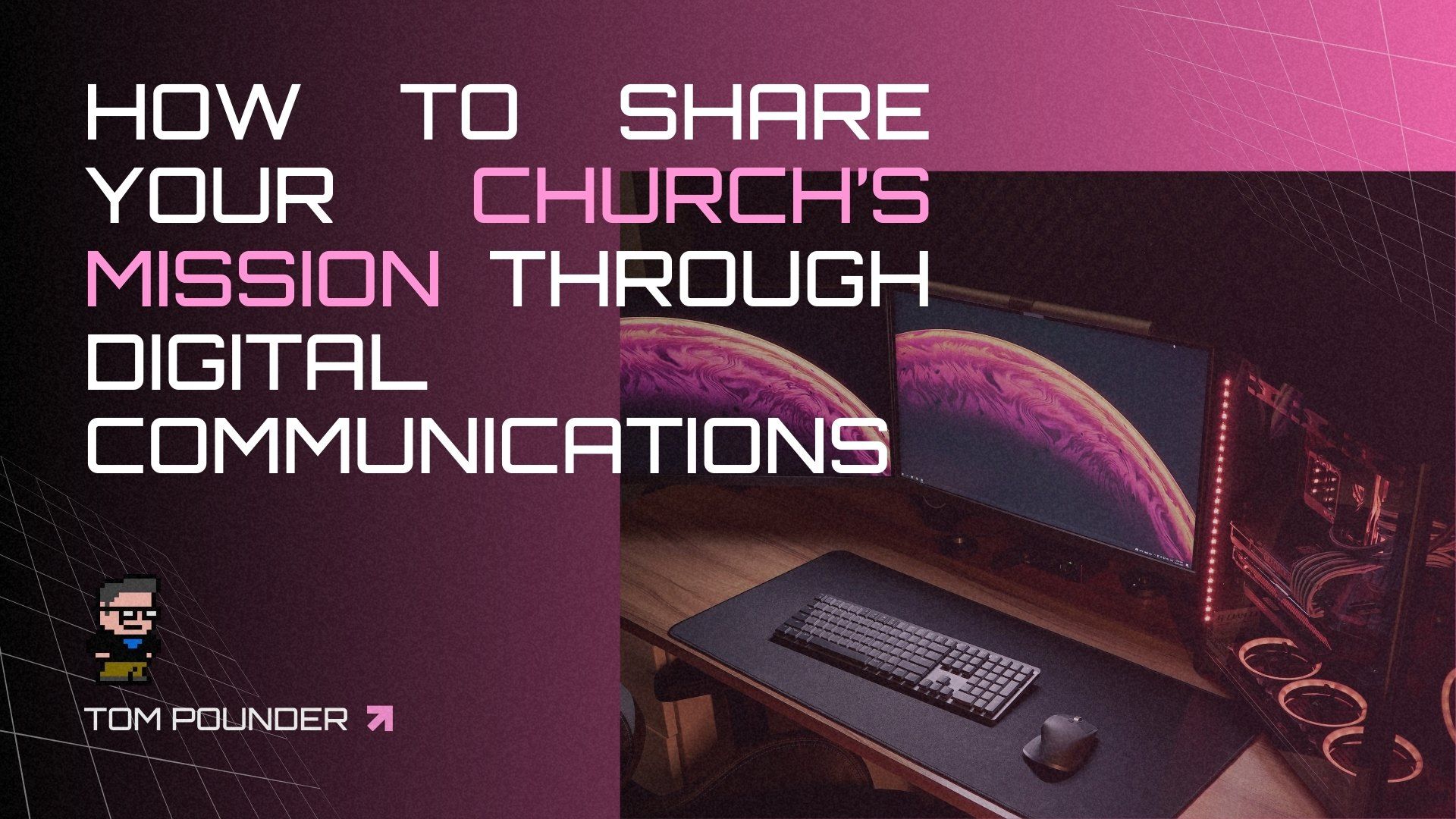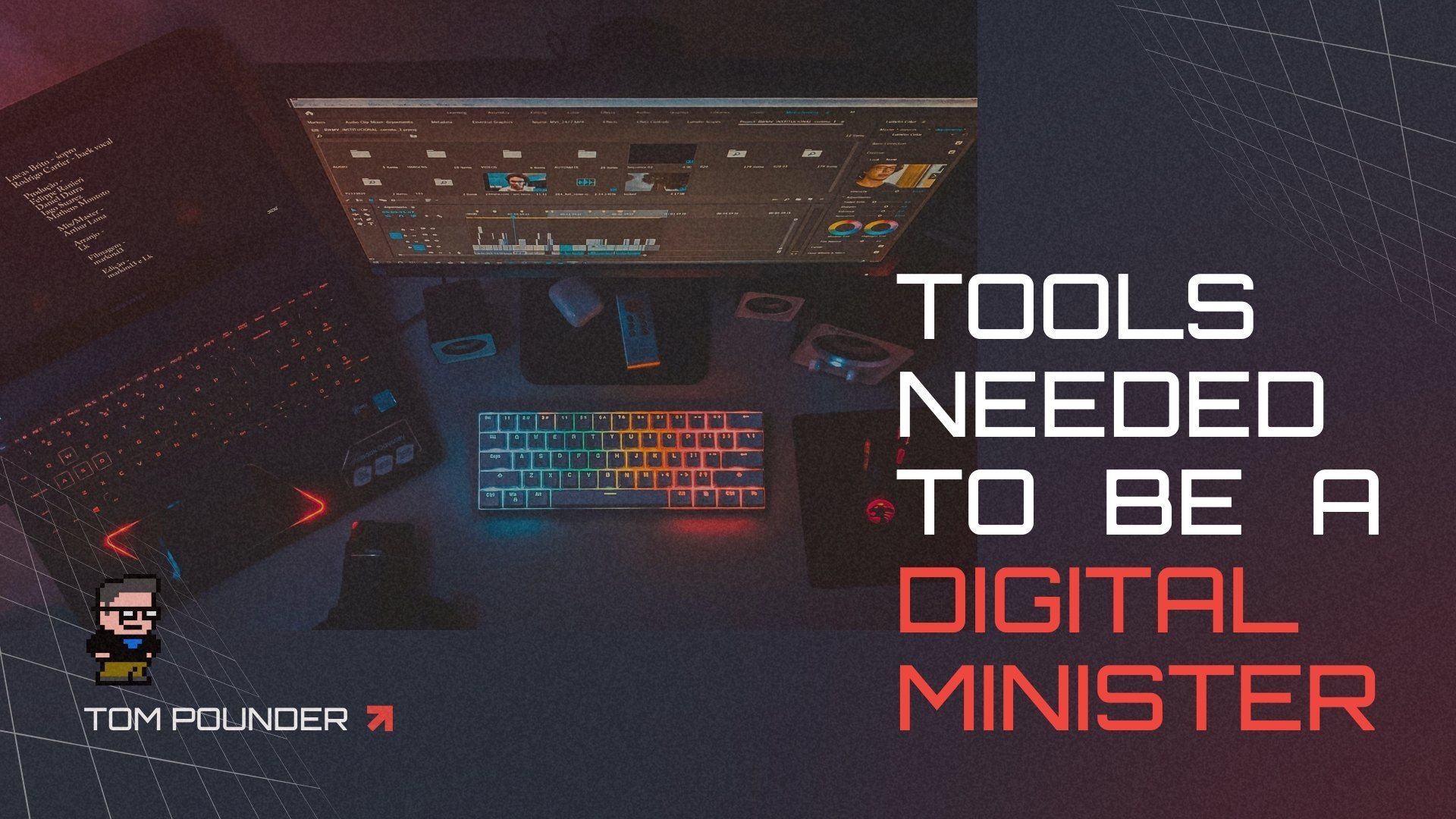PODCAST 012: Living As One & Advanced Church Broadcast
You've been broadcasting your church services for a while now, but for one reason or another you feel stuck. How do you improve quality? How do you increase engagement? How do expand your reach?
In this episode of The Church Digital Podcast, Jeff is joined by Steve Kaminsky from Portable Church Industries as well as Paul Martel & Collin Jones from Living As One discuss in greater detail the production details involved in improving the church's live video broadcast each week. Complete with philosophy, techniques, and practical examples, this is an episode you won't want to miss.
ON THE SHOW
Host: Jeff Reed
THECHURCH.DIGITAL
Twitter
//
Facebook
//
Instagram
//
Linked-In
Co-Host: Steven Kaminsky, Design Consultant
Portable Church
Facebook
Guest: Paul Martel & Collin Jones
Living As One
Facebook
// Instagram
SHOW NOTES
- Pop-up churches: Tyler Samson & Church Anywhere
- Episode 11: Steve Kaminsky & Church Broadcasting 101
- Video
- single wide shot to multiple camera
- stickiness of a switched feed
- measure viewer length, switched
- Epiphan Webcaster X2
- Tighter shots more engaging - Hitachi Cameras
- Ross Switchers
- Cinematic Camera Feel on IMAG
- Canon Cinematic Quality, 24p
Examples: Flat Irons Church & Red Rocks Church - Lighting for Video
- Teaching
- bad color temperature (smurfs)
- good stage wash
- backlighting
- yellow/white of traditional fixtures vs blue/white of LED fixtures (pick one, start with the live room - what works better in the room). - Lighting for Worship
- don't be afraid of shadows
- rule of thirds
- video for worship - Examples
- worship - red rocks
- teaching - Life.Church , Elevation Church , North Point Church
- North Point Video Teaching Rules - Audio:
Single console providing house audio and online audio mix VS Separate Audio console for online
Is a separate console necessary, or tuning the PA so house mix works for online mix - Loudness - metering of volume (worship is about the same loudness as teaching)
- MxU
MixU for video? - Streaming Experience - QoE (Quality of Experience)
29% of people leave after first buffer
54% leaver after a second buffer
SUBSCRIBED?
Subscribe for free to THECHURCH.DIGITAL PODCAST and join the conversation as we collective wrestle with this idea of Church Online.
Subscribe using your favorite podcast app.
HELP ANOTHER CHURCH. LEAVE A REVIEW.
TRANSCRIPT
Jeff Reed: 00:00 Hey everybody, welcome to The Church Digital Podcast and we are kicking off today. We're having a conversation on production. Last week, Steve Kaminsky with Portable Church Industries joined us as we were talking a lot, call it Basic Broadcast 101. We talked a lot about smaller churches or maybe new churches that are diving into starting broadcasting online and what it looks like to kind of put that church service online as a new church or new organization getting dirty into it. And so we've been blessed this week to have Steve Kaminsky, longtime friend, coming back on the show. Hey Steve, man, why don't you just share a little bit about yourself?
Steve Kaminsky: 00:37 Well, you probably heard a little bit last week, I've spent a good portion of my life involved in doing church production. Large church, small church, spent a short a time on the road as a touring roadie, which was a blast, but no way to have a family. And now I've actually been blessed to take, both my experiences, a church tech guy and is a touring roadie and utilize it to help churches that are doing portable environments. So I'm a design consultant with Portable church, which means I get to help the folks that aren't blessed with a facility to spread the Gospel inside schools, theaters, heck, we even have a church that meets in a train station on Sunday mornings. So we can get to do a lot of fun stuff and cool places.
Jeff Reed: 01:20 So, I'm guessing a church that meets in a train station is a lot different than, what was it? Toad the Wet Sprocket. Was that it?
Steve Kaminsky: 01:29 Yeah.
Jeff Reed: 01:29 I'm trying, I'm trying to go back. Toad the Wet Sprocket. Good Times. Good stuff. I was actually listening to them on the radio other day and every time I hear them I'm thinking, "Hey, Steve used to to to travel with those guys." So it was Toad, right? I'm not confusing the bands. Good. So in addition to Steve joining us today and super glad to have him back, we've got some guys from Living As One coming on the show today. I don't know, maybe you're in multisite world or are doing church online, but I'll tell you, this product is really taking the church world by storm and redefining what video teaching in internet broadcast looks like. And so we've got Collin Jones and Paul Martel who are a lot of the brainpower behind Living As One right now joining us and they're both coming on the show. Hey Collin, man, let's start with you. Just tell us a little bit about yourself and maybe give us an overview of what Living As One is.
Collin Jones: 02:22 Yeah, thanks so much Jeff. We love the podcast and love your work and also love Steve and Portable Church, and they're big partner and we actually use them when we were a church tech guys as well. So when we used to be church tech guys about six years ago, we created Living As One out of a need for our church and so before it was ever a company. And that's why the name is Living As One, it sounds like a marriage conference. We get that a lot, but, it was because it wasn't intended to be a company. So we have three campuses at the time at Chase Oaks in Dallas, and we were trying to figure out how to do multisite and web. Our Internet would go out randomly and the stream would stop. So we patented and invented a new protocol with some volunteers. And so it's, it's the first protocol and solution that can work over public internet really well. So it eliminates things like buffering wheels and pixelation and jitters. And so previously churches had to pay, you know, $100,000 for a solution. Now they just pay a couple thousand to get really, really high quality, the same quality we'd see at CBS or a news station or whatever that is. So, that's why Living As One's technology has grown so fast, and then we're all still church guys and didn't change our name. We should have. So that's kind of an overview. We have solutions for both multisite and web, and it just specializes in internet delivery. So with a man over, you know, different dedicated solutions. So if you have, you know, any type of Internet connection is going to have problems. And so with the web stream, you're probably used to buffering wheels and different aspects like that. And so ours is really super simple solution that solves that. And that is why its grown.
Jeff Reed: 03:55 That's awesome. And Paul, you were there with the company from the get go, right? Like when you had this idea of doing something small, did you think this would blow up and explode and become what it's become? Like what's it been like to see this idea come to fruition?
Paul Martel: 04:15 It's been pretty cool. I mean, I remember, like early on in the years just sketching out what it would be like if churches could be able to distribute their message or share messages with other churches or just with themselves across huge spans of geography, you know, different states and different countries. And so I remember this like napkin sketch I have, it's like basically just like these little circles representing the churches and connecting the lines to them. And so it's been pretty amazing seeing it come from that napkin to serving, you know, 400 multisite churches across the world really and seeing that product really come into play and making it super easy and accessible for them to do that. Pretty amazing. Yes, it's been quite a ride.
Jeff Reed: 04:57 That's awesome. Well, I'll tell you, as a guy who's launched a dozen multisite campuses in my lifetime and have clients who have done, you know, far surpassed that Living As One, as a product to me is revolutionized and has saved so much money. I've literally been the guy who has not been able to sleep on a Saturday night and fear of a video teaching solution that's not going to work Sunday morning. And to see the stability of some of that stuff happened. You know, just Living As One, I cannot imagine doing a multisite solution or even broadcasting in a church online environment without a lot of the stability of what you guys are offering it and even the stuff that's coming down the road. It's super exciting just to see kind of how your company is helping bring church up into the modern sphere to be able to broadcast and reach and utilize a lot of what Internet has in capacity with, with online.
Jeff Reed: 05:50 And we kind of glossed over Portable Church. But you know, I've got clients who are utilizing Portable Church. And so I, you know, the vision of companies like Portable Church who are doing things and what Steve's doing, by helping organizations develop systems that allow you to do church anywhere. Like, you know, we were joking earlier about doing church in a train station, and honestly, I've never heard of a train station church before, but the idea of, hey, you know, let's utilize a school, let's utilize, you know, a community center, let's utilize a train house to producing some of these churches in unconventional areas to do church virally where the people are like, that's, that's a great thing. And we've talked in the past about pop-up churches, I think somewhere around episode four, but even doing some of this stuff to, to do church in new areas.
Jeff Reed: 06:47 Some of the stuff that Collin and these guys, and Paul, what they're doing with Living As One and Steve through Portable Church, it's really attacking the same problem but through two different areas. How can we get church through Church Online through Internet technologies to people in unconventional ways? So both, you guys, man, thanks. Thanks for doing that. But here's what I wanted to do today. Like, so last week we talked about doing church and Broadcasting Church online and it was really more of like the 101on one. We actually, we call it Church Broadcast 101, where it's, "hey, I'm just getting started into this." Maybe I'm a 150 person church, a 200 person church, maybe I'm a church plant that's coming up. Maybe I'm a 500 person church. And we've just finally caught the vision and the purpose behind broadcasting this on Facebook.
Jeff Reed: 07:32 And there's tons of resources, you know, that we talked about, hit up thechurch.digital or there's probably going to be the link in the show notes that will help you get there to listen to that and really find out what some of those smaller resources are. But here's the reality of where we are. As of right now, there's 5,000 to 10,000 churches a week that are broadcasting some sort of content online, whether it's, Facebook or through church online platform or Youtube or Periscope, Twitter, whatever it is, they're broadcasting something. And so with this podcast I wanted to maybe step back and challenge some of us that are already broadcasting on ways to do it better. As a general rule, especially when you're starting out church online, the people who watch church online seem to be forgiving. But there's still a challenge for us to do it better. And so what better way I felt to maybe have some of these conversations about how can we do the church online broadcast better then bring in some experts who literally do church online and see church online on a regular basis talking to Living As One and in how that they're utilizing their encoders for this, but also to bring in a Portable Church, Steven Kaminsky, to really explore from the integration aspect, you know, some of the quality issues that may be a church runs into or how maybe a church that's doing just the one camera, can step up to do a two camera three camera. What's involved with that and what questions do we need to be asking? And so just my limited aspect of 20 plus years doing production in a church environment.
Jeff Reed: 09:09 You know, there's several different areas that we want to hit on. There's like okay video, obviously getting video and being more artistic with the video. You know, audio, getting the audio to be better is part of it. And so a lot of this is the stuff guys, I want to dig into and there's probably some other things that I'm not even thinking about, which is why I bring in the experts. So, let's start with this from, from a video perspective, what's the win from going from maybe like a one camera shoot, doing a wide shot of the stage, what's the win from going to that to like a two camera shoot, a three camera shoot, where it becomes more, more dynamic? Like why should a church spend the money or what is the advantage for the church to explore maybe some of that space. Steve, you want to speak into that?
Steve Kaminsky: 09:59 Yeah, I think the easiest way to define that is engagement. If you're going from a single wide shot, which let's be honest, there's nothing wrong with that. That gives you a perspective of sitting in the congregation somewhere and being able to see what's happening as if you were attending. But what you don't get is the emotion and connecting with the folks on stage. Those people are our worship leaders. They're the folks that are pointing us upward and engage in worship. So by being able to have multiple shots in different ways, you can convey the emotion that you feel in the room over video to folks who are sitting watching maybe a week later, maybe a day later, or maybe in different parts of the world. It's a way to draw people in and that's probably the easiest way to define the reason for doing that. My opinion.
Jeff Reed: 10:55 Paul, Collin, like are there churches that you have seen who have navigated this, who have gone from doing like a one to a multiple? I'm just curious. Like does the average church just do the one who are your clients? The multiple? What's your experience there when you're looking at how churches are broadcasting their services online?
Paul Martel: 11:18 Yeah, I think, we definitely have a mix of churches that are doing both. I can't personally think of, one particular one that's done that transition. But I definitely, when I'm looking at those speeds, you know, we do a lot of proactive monitoring to make sure that the quality of experience of the viewing experience is going to be good for our viewers. And so we monitor some of them to help make sure that's going really well. And whenever I'm viewing between a bunch of different churches, I do see a big difference in the quality of the content of the production value when you go from a single camera shot to a multi-camera switched shot and it's exactly what Steven said. You know, it's basically being able to convey that engagement and that storytelling element of being able to craft an experience that you're trying to convey a message is really a lot more impactful versus having a static camera on somebody who's speaking is a lot less engaging.
Paul Martel: 12:17 There's a lot less, stickiness if you call it of somebody wanting to stay around and watch because the viewer can kind of get bored, you know, their eyes start seeking around, jumping around if there's nothing to look at. So much of our information that we receive is visual and if it's a static shot of a talking person, somebody might tend to stick around a little bit less. And so being able to have a better storytelling process to being able to switch cameras and make the whole viewing experience more dynamic, is really going to have a lot more retention and viewer experience.
Collin Jones: 12:50 We measure watch times. So that's how, because a lot of churches, like I know that you just had Jay Kranda on and he told me they don't count for viewer unless it's longer than 30 minutes. And so I think measuring viewer length is really important when thinking about different cameras and what that affects. Also, you know, it's the quality of the viewing experience, quality of technology, audio quality's really big there. I'm sure that we'll touch on all of those. But measuring, I think that's a great thing to measure and I think we have seen, because we have these statistics on a big deal, it's not like we, we did a study on, you know, one camera shooting move to the others, but as people improve their production, online campus pastors do notice a big difference in viewership stickiness as I should say.
Jeff Reed: 13:31 One of my clients, actually I just had coffee with this guy up in North Miami I wasn't even thinking about it in context, but, since we were talking about this, He is, it's this weird thing where he's doing both a wide shot but he has access to multiple cameras. He's renting out a college theater/classroom. So it's got stadium seating. It's got three camera robots, you know, around, and so he really isn't using the joystick cameras as much as he is the lockdown camera that we set up for him. And he's broadcasting using an Epiphan Webcaster X2. And so like the majority of his videos are that, and so today I was actually talking to him about is his Facebook videos and we were scrolling through his videos and were looking at some of his wide shots. His average wide shot was around 200 to 220 views. It's a small church, church plant, getting started. And so 200 to 220 views on Facebook, but then he went into a section of where he was using the robot cams to get on the tight shot. His average view on those was between 900-950 and so this one guy, random, not scientific, we were able to calculate three to four times more viewership. And it's not that its content got better. It's not that it's a different sermon series or a different time, it's the same philosophy. He's just much closer, much tighter, which made that content much more engaging. And so you know, for a lot of us, you know, maybe church online is so new that we've really never considered, okay, well, we're broadcasting the services, but what's the next step after broadcasting the services?
Jeff Reed: 15:20 What I would suggest is the next step is, well let's figure out how to get that video more engaging so that it hooks people longer. Let's do things and we've talked about it, which chat hosts and others let us do things within the space also to make it more engaging. But you know, keeping in mind on the broadcast side, so you know, Steve from just a sheer technological basis, cause you're in this all the time, what if I'm a 1500 person church, I'm doing a one person camera and hey, you know what, maybe it's time to step up a little bit, maybe I'm a 700 person venue doing two or three services. Like what's a good model? What's something really to look at for us to look at how to take that next step in the broadcast to get more cameras and more engagement?
Steve Kaminsky: 16:10 The easiest place to start, I think is Hitachi Cameras. They make a fabulous product. It integrates with Ross switchers which seem to be fan of everybody. Everybody loves that carbonite black and they fit a very, very nice price point. That is going to be a beautiful set up for your standard ENG shoulder can news gathering camera's setup. It's going to look good. They have extremely nice low light response, which is important in churches because a lot of churches are a trending darker in their lighting philosophy, a little bit less light on the faces of folks, less light in the room, so you're not going to have the issue of trying to pick up faces. Some of the Hitachi models are very LED wall friendly, which is another trend to be careful of, you want to be mindful of the fact that LED walls and cameras don't always play nicely with each other.
Steve Kaminsky: 17:04 The trend that I think is heading upwards though right now, especially when we talk about artistic storytelling, which Collin/Paul, I'm glad you guys brought that up cause that's a huge piece of doing video online, is we have a lot of churches that are kind of moving towards Canon cinema cameras, which brings its own inherent challenge. We have a lot of similar work that's being done on DSLR bodies. Everything. Most content, shouldn't say all content, but most content we're seeing online these days is shot with that cinematic feel, that shallow depth of field, that 24p frame rate, you know, the whole thing. So we have a lot of churches now that are moving that direction. They want that artistic feel as opposed to your, nothing wrong with it, but the traditional style of camera shots. So I would say depending on who you are, those Hitachi cameras are fabulous. But if you really are more trending artistically, the Canon cameras are another great place to start and they both fit a similar price point in general.
Jeff Reed: 18:10 Awesome. So like, who are some people who are doing, the average person you just said cinematic quality 24p and I love my listeners. They got no clue what you just said. I totally understand what you're saying. What's a good example? And so either of you guys, I don't know, but like who's doing 24p? Well, if you want to link to somebody in the show notes, who can I say, go look at what a cinematic church service looks like stylistically by watching this church, is there somebody that stands out right now?
Collin Jones: 18:44 Yeah, Flat Irons and Red Rocks and we live by both of them. So we go to both. We have people on our staff that go to both of them and Flat Irons, Rob, is kind of the guy that pioneered that were using Canon cameras and he actually switched to Panasonic but Red Rocks uses Canon and they look really, really good and it's awesome. So yeah, either watching Red Rocks or Flat Iron speeds and they're both Living As One customers and they're great.
Steve Kaminsky: 19:08 Flat Irons is probably the one that sticks out most mainly because Rob has pioneered it. So I got to hang out with him and an NAB and dude is just a genius when it comes to that. Some of the stuff that he's done to make it work is fantastic. It's probably push some of these manufacturers to make their, you know, their cinematic cameras like the C300s, the C500s more friendly to a broadcast environment. So even some of the options their offering, for example, Iris Control, Remote Iris control used to be the biggest problem because you don't want a camera operator fidgeting the focus, zoom, and iris. Well, Canon has made it possible for their remote controls now to control iris. So now you can have an engineer in a control room helping set light levels. So even just that simple piece has changed things immensely. So it's trending that direction as things get a little bit more friendly.
Jeff Reed: 19:59 Awesome. There you go. We'll link to some of these in the show notes and include some other examples for you as well. But I loved the cinematic look. What's interesting is as I've been working with clients, they've got so much invested in the broadcast that they haven't been able to like take that jump, but for a church that maybe hasn't made that initial investment into broadcast style cameras, which is the opposite of cinematic, you know, maybe it's a good opportunity to get a more artistic feel with it. And so the depth of field and some of the stuff that we're talking about here looks great. So be sure to check those examples out. One other thing that I wanted to touch on at least while we're still in the video side, before we get to audio, I talk about a lighting for video sometimes, or color temperatures and like the techs that I talked to it's like they can't comprehend a lot what's in involved or you know, I talk about having the same color temperature and you can't do like the white, white and the yellow, white at the same time because the cameras, you know, freak out.
Jeff Reed: 21:10 It depends on how it's programmed and all of a sudden people look like smurfs cause they're too blue and they just it's like foreign. And if you don't know what I'm talking about, I'll link to very bad examples of what this looks like because there's some really bad church examples out there. But what are some rules of thumb that you guys have experienced or looked at? Hey, here's some things to consider when you're doing lighting for broadcast, you know, and the good news is this even helps if you're not doing multiple cameras, even one camera can benefit from this, but like lighting for broadcast, using the backlights, how to do front light appropriately, how not to have shadows. Like what are some things that you guys kind of consider, see, with churches that are doing it well? maybe some things that you've helped with Steve on your side. What does that look like? Living As One guys, you want to start off with something?
Paul Martel: 22:05 Sure. I mean I can start off with the basics. I mean, it's important to have adequate surrounding lighting on your speaker. So a good stage wash is just absolutely critical because if you look at a video and they're not lit properly and you know, if you're going to have to gain up the camera or make that camera more sensitive to the light and you're going to introduce grain and other artifacts in that image that just are not going to produce a good-looking image. So having an adequate light, on that speaker, is absolutely critically important to affecting the overall look of that. Backlighting can add a ton of great depth to the look of your video. So what we did, at my home church back at Chase Oaks, I used to do some lighting designed for them so we'd have a nice solid stage wash across. So if he walks to the left side of the stage, there's plenty of light there. If he walks to the right side of the stage, there's plenty of light there. And then we actually had some movers that were moving lights, moving heads, that were mounted to the ceiling and we would point them down. They were probably about 15 feet behind the speaker for our particular setup and the angled down so they gave him, kind of the back of his head had some nice light and it lit up his shoulders as well and that gave him a lot of depth. Instead of him looking very flat, if he only had front lighting. So combination of nicely balanced front light where it's nice and even as he walks across the stage and backlighting to give it that depth are probably two things that I would definitely recommend for at least the speaking part of when you're trying to broadcast a message or a sermon.
Jeff Reed: 23:43 Sure. Backlight I know plays a big part and I've seen situations where black backdrop, pastors wearing a black jacket, and has black hair and it's just looking at a face in an undershirt almost basically is because there's no real separation. The white tee shirt, he's wearing or the white shirt underneath his jacket is what's really driving the brightness and everything else because it's black is lost. So that backlight is key, in context. Steve, I know you've got traditional fixtures which are typically in like a yellow/white, you've got the LED and intelligent fixtures which are typically more LED blue/white. You know, what is that tension like when you're creating a broadcast environment for video teaching or for others? Like how do you use what, how do you regulate when to use what, where?
Steve Kaminsky: 24:44 Well, so I think the interesting thing to note with that is that you want all your light to be uniform. So at no point should you be mixing a daylight with a warm white color temperatures in the same shot because then your cameras don't know what to do and you're going to have smurfette on one hand and then you're going to have a really bad spray tan on the other hand. It's just, it's not going to blend well. So you need to pick one. I don't know that it really matters from a broadcast standpoint, which one you pick because your camera can be shaded and colored to adapt to that corporate broadcast. I think the more important question there yet to start with the live room itself, if you've got daylight white on everything on stage, but your house lights are warm light, you're going to have a bigger issue in the room and then fighting that.
Steve Kaminsky: 25:33 So I think the decision starts with your live room and then make that uniform across the board. I think is the easiest answer to that. And then even light on the stage and especially for the message and for any hosting that's done is make sure it's even, there's nothing more distracting, We talk about removing distractions all the time, then, some pastor walking across stage and getting darker and brighter as he takes each step, especially if the camera's panning along with him. So even same color temperature light across the whole spectrum is key. I personally am a little bit more of a fan of the warm white because most environments your house lighting is going to be a warm white color temperature. I will say most cameras and technology play better in daylight, just a blue color spectrum is more friendly. But after having seen both, I'm a warm white fan.
Steve Kaminsky: 26:26 Well, I was gonna say we should spend a lot of time having the conversation around the lighting for the speaker. But let's not forget that when we're talking about worship, we're talking about closeup shots, an easy trap to fall into is let's bade them in like two, but don't forget that shadow plays well into emotion. So just because we're talking about that we want your speaker evenly lit across the whole spectrum doesn't mean it needs to look like the sun shining on the whole stage during worship. Let shadows play to emotion. And then there's different points of view on that. But don't be afraid of shadows when music's playing. It actually helps creating that story. Again, we're talking about storytelling earlier. It allows story to be told in those moments.
Jeff Reed: 27:12 Yeah, as a video director, I actually think that it's two sides of the coin and that the rules that apply for video teaching during a pastor are the direct opposite of how the video rules apply during worship. You know, if I'm looking at the frame in teaching, I always want the pastor in the middle, you know, keep the camera in front of him as he's moving across. You're keeping him in the middle of your view finder in the crosshairs. During worship, I would much rather have the person that's in focus your primary person on the left third or the right third and using the rule of thirds. So I'll put a definition of that in the show notes, but to create more negative space around the person to work with transitions and in pans and things like that where you want that teacher to be as bright as possible.
Jeff Reed: 28:01 You really want the worship to be more dark where you want it to be focused on the teaching. A lot of times in worship you want to focus on the environment for some of that to convey some of the emotions. And so really it's two different sides of the coin and they're both necessary to have cameras that are able to get some of the darkness but can focus on and handle, you know, the bright as well that you want the encoder to be able to have stability going to both sides with that and having volunteers that understand during worship, your camera operators need to have this philosophy, but teaching's a completely separate thing. What are some examples of like overall, and you mentioned a couple on the 24 frames, but either of you, all three of you, who's doing this well, who should we be looking at and we're like, hey, there's a really good artistic worship angle and there's a really good, teaching perspective, what churches out there for somebody who's trying to figure out how to get started, who should they be looking at?
Paul Martel: 29:07 I would say, Red Rocks for the worship. They are just killing it. I was talking with one of their technical directors the other day and I was really blown away of how he described it to me. He does both the lighting design and he is in charge of all the cameras set up and he doesn't even have a shader on their camera during worship. He sets all the lights and all the cameras at a single setting on the aperture, basically how much light is coming in on the camera. And it never changes during worship. If you look at that video that they produce, they're using, I think Canon C200s, those Cine cameras with the nice shallow depth of field lenses and I mean, Wow, it is an amazing look when you look at their video. So if you can check out worship for Red Rocks, you'll be amazed. Then I would say if I had to pick one for message, I would probably say Life.Church. The Craig Groschel, look that he has on that slick stage and they do lighting so well. That's probably the one I would say for the messages for me.
Collin Jones: 30:12 His is an intense imag one too, he's speaking directly to the camera.
Paul Martel: 30:15 Yeah, he does a great job of speaking to the audience on the cameras too.
Jeff Reed: 30:20 One of the things that I love, and I've heard this, I don't know if it's still true, but I know it was at one point, like the cameras at Life.Church are in like row three or row five, right there. They were pushed very much up because and when I'm coaching, you know, preachers and communicators on video teaching, it's always, "you got to remember, pastor, there's more people on the other side of that lens than in the physical room". And that's so hard for like the average pastor to really connect with because that pastor, that communicator, has been trained for 20 or 30 years, preached to the room and you're training these teachers to learn: It's not just the people in the room. There's more on the other side. As you're looking at multiple campuses, as you're looking at church online, as you're looking at audio podcast, or Youtube and sermon archives and all the different distribution points and the majority of churches, it's a fact.
Jeff Reed: 31:15 There are more people on the other side of that lens then, then actually physically in the room. So that's, that's great stuff. I've, I've liked elevation and how they do the teaching. Uh, but what's interesting is that it breaks every rural rural r u l e rule known to churches like you, you're not supposed to show the audience, you know, they do the over the shoulder shot, um, to show the audience over. I'm a man, I'm just blanking on the pastor's name. Who's the pastor? Steven Furtick. There are over the shoulder on Furtick to show the audience you always want to show the pastors face, but they're doing over the shoulder. You can't see his face. It's like all these preconceived norms that started with, you know, Groeschel that started with North Point way back in the day with north point video teaching roles, which is where I learned at 12, 13 years ago on how to do video.
Jeff Reed: 32:10 Like he just trashes all of it in the whole stadium. Oh yeah. And it's like, but it's, it's, and maybe this is me because like I said, I'm an old fogy, but it's breaking all of those roles. To me that makes it so exciting and engaging. Cause I'm like, he can't do that. Oh look, he just did. He can't do that. He can't show the audience that way. And then all of a sudden he is and I'm like, hey, this isn't really, isn't that bad. And so not to like separate from the way everybody else is doing it. But that almost makes it exciting because it's unique in that. And honestly I get that same feeling when I look at the cinema, the cinema cameras and worship. Cause I'm like, it's so it's unique in that there's not tens of thousands of churches doing it on a major level.
Jeff Reed: 32:56 It's just very small percentage getting into that space that really makes it powerful stuff. All right, so let's, let's talk about audio because audio is, is one of these areas where people have patients. When it comes to video, uh, there is a miscue, there's a miss cut. Um, something doesn't look quite good. They're going to give it patients because they can hear it and they can understand it. But if it doesn't sound good, if you've got a bad worship mix, if you've got a teacher who's cutting in and out, uh, the mics dropping out, like they're not sticking around. Um, and, and so an online mix is, is so important. So I'm a church that I've been doing an aux out of the board or a matrix out of my soundboard, straight to the camera. The house mix has been broadcasted out and there's nothing, we talked about this earlier, we talked about it last week. There's nothing wrong with that. However, there's an opportunity to expand and to get better. So Steve, just kind of like, let's define it. If we wanted to go from a one mix, two, like a two mix, we're now, I've got a separate board, got a separate engineer, like what's a two minute explanation of how to do that?
Steve Kaminsky: 34:17 Split honestly is the easy answer. So you need to have some kind of split that allows you to have a second console to access all the audio inputs that are available to your console for your house. Uh, that can take one or two ways. That's an analog split going completely old school where you've got something that's giving, doubling all your inputs are. So you have one for each console or today's dating world. You have a lot of uh, digital snakes that'll allow one console, the APP access, um, to the inputs and then another console to access those inputs as well. Uh, so just kind of depends on which console you have and which constantly you want to utilize for your broadcast mix. Um, but being able to split audio out is the key
Jeff Reed: 35:04 if you're getting a separate podcast console. Yeah, I know, I know I've, I've had this conversation before and I always get a different opinion back. Is it important that both consoles for online in house are the same? Like do they need to be identical or can it be separate? What are some of the pros and cons of that?
Steve Kaminsky: 35:23 Uh, so the pros of them being identical is if you're running volunteers or you're hiring in audio engineers, um, they can then either run the house mix or run the broadcast mix. So you have one set of training principles in existence. And if it's a console, like a Yamaha, like a a digico where they can do a gain sharing off the stage box, then it's extremely crucial and money saving at the same time. Um, so it's extremely important. Now if that's not your goal, um, then it's not as important. If you're paying folks and you're paying guides always do broadcast and you're paying guys always doing front of house, it's very different. If you've got a volunteer that's a recording engineer might be easier to stick them on pro tools and he might be able to be do it quicker, um, off that. And then you actually have to buy another console surface. You're just buying a digital input box. So my opinion, it's extremely important but it's not a one size fits all either.
Jeff Reed: 36:31 So what kind of space do we need if we're trying to set up like a, a studio to mix from? Are we mixing from like any or are not in, in ear headphones over year? Are we mixing from near field monitors? Like, like, what do you recommend kind of conceptually, if we're really creating a separate mixed desk for this, what types of tools does a volunteer or a paid person need to actually make sense?
Steve Kaminsky: 36:56 This area? What do you think Steve? So I would say a standard size office. So you're talking maybe 200 square feet, um, that gives you enough space to add something.
Jeff Reed: 37:06 Who's 200 square feet? What kind of office are you working in? Holy Cow. That's awesome. Good for you. I'm kidding. All right, keep going. 200 square feet, go for it.
Steve Kaminsky: 37:21 And then the near field monitors is honestly the easiest way to do it. You can get really tricky and have a couple of different types of monitors so that way you can kind of average your mics out. You can simulate, you know, computer monitors or you can simulate car stereo. Um, but you just want to find yourself a decent pair of nearfield monitors to mix to, um, get them tuned for the room, acoustic treatment for the room. And then rock and roll.
Jeff Reed: 37:48 So tell me this and, and it's just open this up to everybody. What is the difference? Because some of these people, you know what, listen to this broadcast are probably saying, but it's the same service they're mixing like how's it, how's it different? So how does a mix for the house differ to the mix that we're hearing online?
Steve Kaminsky: 38:10 Wow. So that, that is a, that is a bit of a loaded question. Um, because in this day and age with digital consoles, um, you have a lot of churches that don't have a separate broadcast booth because, let me caveat that they've dialed in the sound of their rooms so tightly and had the PA tuned so nicely that the mix that they're sending the PA is good enough for broadcast. So watermark, um, they are sending the house mix broadcasts these days. They have a full broadcast sweet. Um, but they are utilizing what's coming off the front of house console because it is fabulous. Uh, Andrew Stone, um, church on the move, uh, they run a program called MixU. Um, they actually are big proponents of get your, get your house mics set up really well, get your pa tune really well and then you don't need a separate broadcast. Sweet. Um, so it, it's, it's kind of a loaded question on how it's different because if you're doing it right, it shouldn't be in theory you should be able to mix one place and it's the same as the other. MMM.
Jeff Reed: 39:16 Right. You just, you just, you just do something back to me. Let me throw it back at you. This is great. I love it. So give me three things to improve to do it right. So we're not doing it right. I have to have a separate mix. What are three things I need to improve on? What are the top three things to work on so that my front of house mix can work for broadcast
Steve Kaminsky: 39:37 tune your PA, get your pa tune extremely well. So that way what you're sending out of your console, if you were to record that on a CD mix and if you were going to listen to it, the PA, you would not be able to tell the difference between what you're listening to in your car and what you're listening to in the row. Now we can all agree that's never going to happen because I've got bigger subs in my worship center than I have in my car. Most of us don't have subs in our car anymore. Um, this isn't the 90s. Um, now tuning, tuning is a big piece of it. And then it is having someone consistently mixing in that room that has a good feel for what's happening. And that requires a lot of effort and a lot of crafts in a lot of work.
Steve Kaminsky: 40:22 Um, and, and that's what's gonna be required to achieve that. Uh, so tuning, um, a lot of effort by the engineer into listening to his mix and playing it back. And then I would say the third thing is, is output processing. Uh, today's age, almost everybody has some form of plugin, whether its waves, whether it's the Allen Heath consoles that have their onboard processing. And a lot of what you're doing there is just sending broadcasts, safe levels, 90% of the issues in audio online usually come from clipping, you know, someone blowing out the audio and it just spazzing out on you.
Paul Martel: 40:59 Two other things that I was thinking about, loudness, there's something called loudness that is actually a standard in TV that, um, basically the history of it was, uh, commercials would come on and there'd be way louder than the TV program and it's because they wanted to get their attention. They didn't want you to tune out. And so they would come on and they'd crank up the volume as much as they could that they were allowed to, to get it to the broadcast network. And then whenever a transitioned, it was just like, Whoa, why is that commercial so loud? So the FCC put out a new law about loudness and it's a, it's basically a metering of volume or the average volume over time. And um, so monitoring that for your online audience, making sure that your worship is about the same as your speaker when it comes to overall loudness is really important. Especially when you're talking about playing on smaller TVS, the smaller speakers, huge changes in volume, we're going to be really inconvenient for them cause they're going to constantly have to adjust their volumes. That's probably one of the other things to really think about is monitor the overall loudness of your feet. Go into your online stream.
Steve Kaminsky: 42:02 And so let me, I'll tag off that. Paul was saying, here's the pro tip. If you're in a situation where you have to use one console, um, and you don't have the space, resources, whatever, you to do a whole separate broadcast mix by a waves, LD1 mixer, bus out your worship mix, your pastor mix and your audience mics mics, and then use that simply as a matrix mixer to do that loudness metering to do that, shaping the set your levels and you will be a happy camper. That is probably the easiest and most cost effective way to do it. Um, it can live in Iraq, in the control room. You can have someone over there that can just monitor and check those levels is probably the easiest way to accomplish that. Um, and then keep your audio engineer in the house focused on the mix in-house.
Jeff Reed: 42:57 Hey, so this has been a great conversation. Um, I love the production aspect. I love the video aspect of what, of what church online does and the ability for us to step up to maybe improve some things. Um, this is, this has been a great conversation in the show notes. We'll have lots of lots of these resources. We've talked a lot about a lot of different churches that are doing some of this stuff, which is good. I've often wondered this, so somebody mentioned it and I forget if it was a Steve or Collin, but we talked about MixU which is a resource for the audio side of the equation and by the way, that's a phenomenal resource. Definitely check them out if you haven't. Great for church is great for volunteers, you know, dive all into that on the video. Is there a MixU equivalent on the video side?
Jeff Reed: 43:49 Has somebody doing something? Are they exploring that space? Not that I know of. I second the recommendation for MixU, do you know what? No, there needs to be there. You're going to have some opportunity, you know like, pardon me. In the back of my mind I'll say this, I'll podcast. I don't care. Part of me is like, why don't we just do that, but I don't have time. So anybody out there who's wanting to do like a MixU thing for video. I have several churches right now who will sign up for that in a heartbeat to, to be some of your first customers to make that happen. Because as the church continues to grow and expand more multisite, more church online, more churches are going to be wrestling this, you're going to look for that. So hey podcast listener out there who's struggling to find what, what you need and where God's leading you and calling you and you're good at video. Hey, I just gave you a business. I will, I will charge you 5% commission so you can feel free to write that check to thechurch.digital mail it to me and I thank you in advance for that. Hey, so this has been a great show man. Thank thanks for this. Um, Steve. Uh, and we'll just, you know, wrap up any, any closing thoughts? 20-30 seconds as we're landing this plane.
Steve Kaminsky: 45:01 Yeah, we talked about a lot of stuff. They can seem intimidating. So if you are the church and it's wanting to get into this, it's, it's, it's not that intimidating. Be thoughtful about it and be intentional about it. And take your time getting into it. The reach that your church will have by doing this is going to be amazing. The impact that you're going to have long term is going to be amazing. You are opening the front door for so many people. Um, so do it. Take a step at a time. Um, and then partner with folks that have done it. Don't operate in a vacuum, don't do it yourself. Uh, lean on resources and people who are available to help you.
Jeff Reed: 45:39 That's awesome. Was that a cat or was that your kid knows you're eating lots to say. I was like, he's sleeved. Does it have a cat? So that's not sure what's going on over there. That's awesome. I miss your kids made Steve and I have gone way, way back so that, that's good. Collin. Paul. Hey, as we're landing the plane in any thoughts?
Collin Jones: 46:02 Yeah, so we've thought a lot about the audio and the video part, but not on the experience side in terms of what is the quality of the video, like in the actual, you know, buffering, etc. And I think it was like your church online grows up as you get to the next level. Um, oftentimes church tech directors and we were, we were in that position. I mean, you know, they get emails from people having problems, but they're so busy that it's so hard to deal with. Um, and so on. I had second Steve's encouragement that if you're putting content out there, it's better than nothing. People are coming to Christ through. My family came to Christ through church online, big believer in it, so it's better than nothing, but on average, like 29% of people leave when they see their first buffering wheel. Um, and so I would really think about, hey, what's, what's, what's the best technology adaptive bit rate streaming, etc.
Collin Jones: 46:48 Staff that you can use because that like, um, and that stat, 29% of people that leave is a significant buffing wheel of like five, 10 seconds, whatever. Um, and that's in all industries, including sports, which is most of the online might be shift. So it's probably, it's probably greater than that if in the church world and then 54% of people leave even a second buffer fill. So you'll see that when you look at your analytics and people dropping and they can tolerate lower quality like with a lower bit rate. Um, and if you don't know what I mean by that, it's like, you know, you have 10 ADP and then all the way down to one 40 with most providers. So having, having those options is very, very important for your viewers and will generate a lot more repeat views so that your as a tank over time and it actually grows and is not a frustrating experience for them.
Collin Jones: 47:33 So that could be a whole podcast in itself on quality of experience and how to make that, um, the best experience at can so that you have repeat viewers and people that aren't annoyed with your stream because if they can't watch it, audio and video quality does matter. You know, it's, it's the, it's still audio and video quality. But how many cameras you have, doesn't matter if they're getting a buffering bill. Um, so I would, um, and that technical term for it is QoE which is quality of experience. And that's a great thing to research.
Paul Martel: 47:59 I think for me, I would just say, uh, just to tag on a little bit additional to what Steven's said, you know, or encourage them, miss is focused on, you know, incremental growth, pace yourself. Don't try to do everything at once because that could just become overwhelming and not enjoyable and you could make way more mistakes than you would need to. Um, so, you know, most, most healthy growing paces, you have periods of growth and then you have periods of stability, making sure in ironing out all the, all the bugs and the tweaks you have encountered. So I would, I would, uh, just encourage you to definitely pursue, um, improving what you want to do, but don't try to do it all at once. Just make sure that incremental and plan for the longterm, you know, partner with people who are, um, who are not going to go away, you know, quickly. And, um, and if you need, when you're trying to climb a mountain, you do it one step at a time. So we have that mindset. Don't try to jump up in one giant leap.
Jeff Reed: 48:54 Yeah, we had on in episode five we had on David Urzi, who's man, I'm blinking at the church he's at, he was formerly with seacoast, came in. Um, I'm going to fail at the church right now cause I don't have it in front of me. But when he came in, he, he was evaluating the online environment and they were doing all sorts of stuff and they were all over the place and there wasn't an infrastructure in place it at all. And one of the things that he talks about in the podcast is, is he stopped everything and said, I'm just broadcasting one service. Even like Facebook, multiple chops, you know, so different social media networks. He's like, let's, let's start with what's reset. Let's start with one and let's build from there. And he talks about how resetting really allowed him to, to build a healthy infrastructure instead of feeling like he was drowning all the time with information and stats and not really funneling them into a discipleship pathway or, or what you have I have for you on, on that line.
Jeff Reed: 49:52 So that's, that's very good feedback, by the way. And we didn't, we didn't really park on this much at all, but in context of, uh, living as one, uh, of how they're providing a solution from a broadcast perspective, portable church, uh, and, and how they're like these guys, both of these, all three of these, but both of these companies, both, all three of these individuals are phenomenal in how their resourcing church the big C church and helping them do ministry, uh, in today's modern era. So if you're looking for a plug, if you're looking for insight direction, if you need help understanding this stuff, um, I cannot think of a better company to connect you with on the encoder and a decoder side than living as one. And when I work with churches, especially ones that are doing multisite, and, and even as they're growing and expanding more product, I cannot think of a better company to partner with them then Living As One.
Jeff Reed: 50:53 And those of you that are, oh, I've got a client who's launching a multisite in 2019 in the fall. And I picked up the phone and call the only person I knew how to speak to in context of this. And it was, it was a Steve over at Portable Church. So yeah, I don't do a lot of endorsements. I don't do a lot of commercials and I don't even think if I can legally do this, it's my own podcast. They can't arrest me. Right. So at the end of this, the people you want to talk to, if you're in these areas are definitely these guys. Hey, Living As One guys, where can they find you on social media?
Collin Jones: 51:26 Yeah, we're on Instagram and Facebook. We're not on Twitter. Website is great too, or just email us - livingasone.com or @LivingAsOneStreaming on Instagram.
Jeff Reed: 51:41 And we are not confusing that with a marriage seminar. Although, that's the best line I've heard in weeks. No, we're not a marriage seminar, we're actually a streaming service. Hey Steve, how can people connect with you online?
Steve Kaminsky: 51:57 You know, the easiest way to connect with Portable Church is to checkout portable church on Instagram and on Facebook. We have a lot of content out there as well as some pretty cool new products that we're rolling out. Easiest place to connect there. And then I'm on facebook.com/servantforlife. Feel free to hit me up and reach out to us through our website.
Jeff Reed: 52:20 Awesome. Hey, so for Collin, for Paul, for Steve, my name is Jeff Reed with The Church Digital. If you've not subscribed to this podcast, subscribe now, write a review, say something nice, share it with a friend, check out the show notes. Hit me up on social media @deerffej, which is weird, but it's Jeff Reed backwards. D-E-E-R-F-F-E-J. Like I said, it's weird, get used to it. Hey, so for all of us here at the podcast, thanks for joining us and we'll see you next time or hear you or you hear us? I think that's better. You'll hear us next time on The Church Digital Podcast. Thanks everybody.
What do you think? Share your ideas on Discord or on social media.
Through the.Church.digital, we are helping physical and digital churches better understand the discipleship process, and helping churches and church planters understand this and other decentralized mindset shifts. By taking this quick assessment we can get you connect with a coach, resources and more. Also, check out our Discord Group where we are encouraging people daily.
